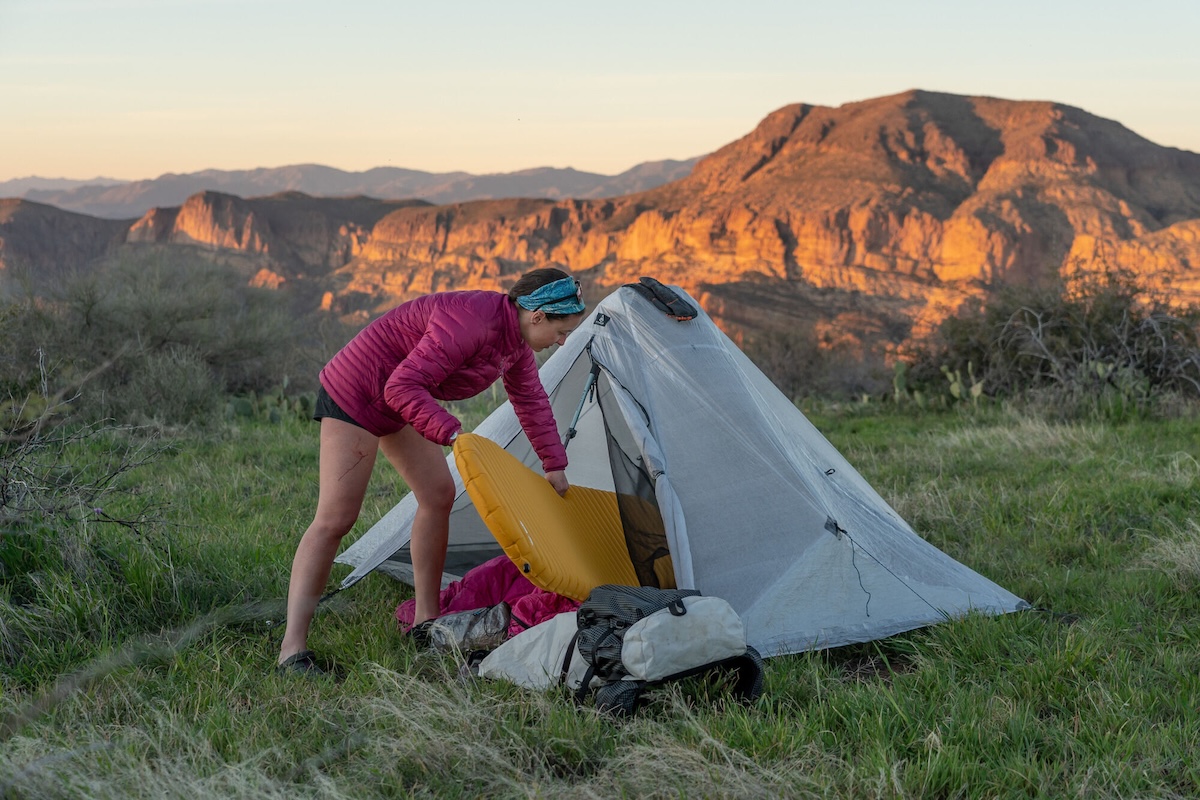
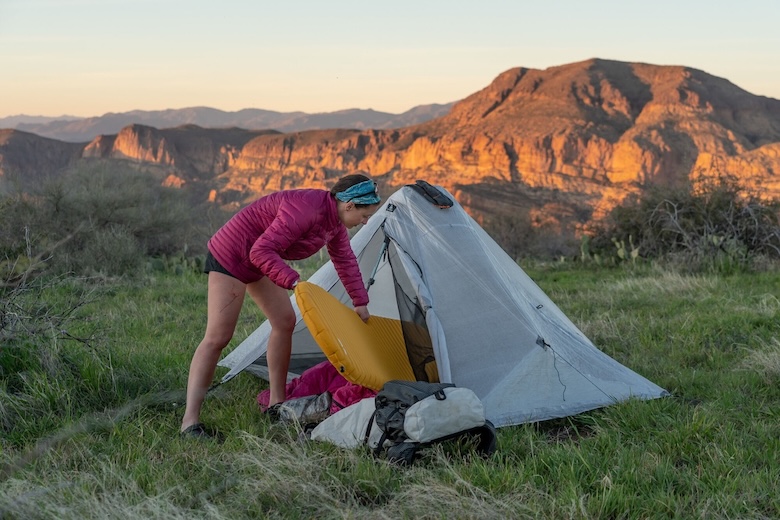
Dan Ransom Photography


Dan Ransom Photography
A sleeping pad is a critical—and often overlooked—element to a backpacking system. And while early backpacking sleeping pads were bulky and often weighed several pounds, plenty of current ultralight offerings pack down to the size of a water bottle and weigh under 16 ounces. With advanced insulation, durable materials, and a variety of baffle styles, ultralight sleeping pads are warm, provide plenty of protection from the ground, and add little weight to your system without much compromise. We tested the 13 pads below on backpacking and bikepacking trips where weight, packability, and a good night's sleep are crucial. From the Great Divide to the Appalachian Trail, these are our favorite ultralight sleeping pads for 2025, including a range of options from four-season pads with an R-value of 8.5 to minimalist foam mats less than a half-inch thick. For more background information, see our comparison table and buying advice below the picks, and for campers more open to a range of weights and thicknesses, check out our general picks for the best sleeping pads.
Editor's note: We updated this guide on September 15, 2025, to add the Sea to Summit Ether Light XR to the lineup, along with photos from this past season of testing. We also swept the guide to ensure all tested models are up to date and available. Finally, it's worth noting that all prices and specs reflect the "regular" size of each sleeping pad, though smaller and larger options are available for most products.
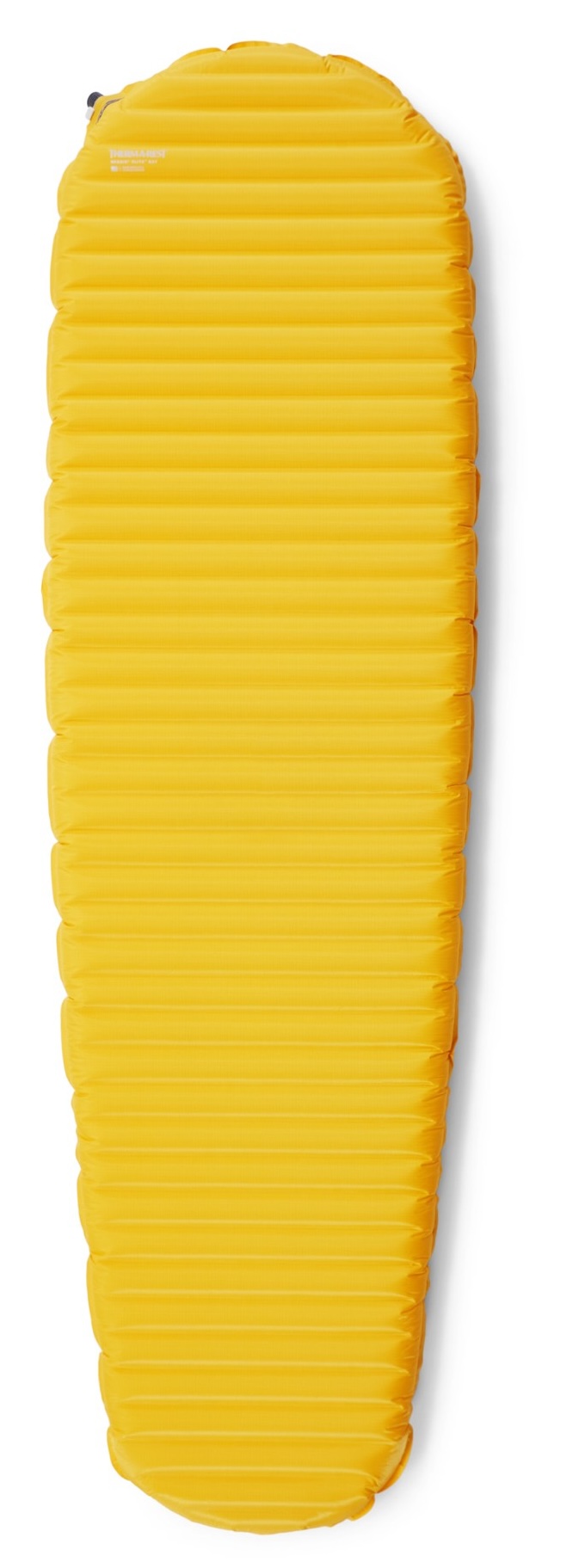 Category: Air pad
Category: Air pad
Weight: 13.0 oz.
Thickness: 3 in.
R-value: 4.5
What we like: More efficient valve, quieter insulation, excellent warmth-to-weight ratio.
What we don’t: A little bouncy when fully inflated, more prone to punctures than other materials.
Some version of Therm-a-rest's NeoAir has been ubiquitous on long-distance trails for more than a decade. While previous versions were much more crinkly (you could tell who had a NeoAir at camp anytime they rolled over), the latest version has updated insulation materials that are notably quieter. This pad landed at the top of our list thanks to its truly impressive specs—the 3-inch baffles, 13-ounce weight, 30-denier surface material, and 4.5 R-value make it hard to beat in terms of warmth-to-weight. Further, the pad rolls up to the size of a Nalgene, and the updated WingLock valve significantly reduces inflation time compared to prior models.
This pad is hugely popular for many reasons, but you do have to treat it with care. We've found the surface material to be more prone to punctures than Sea to Summit's Ultralight Insulated Air Pads (which use 40D material on the bottom), and some people might prefer Sea to Summit's gridded baffles, which conform better to your body. As far as cost goes, the NeoAir XLite NXT was on the more expensive side of things when it debuted, but the rest of the market has caught up and similar pads from reputable brands are often priced around the same Overall, the impressive warmth-to-rate ratio and lofted design are worth the cost, and at 72 inches long and 20 inches wide at the shoulders (for the Regular size), this pad provides a decent amount of surface area for most campers. For more winter-ready warmth, check out the NeoAir XTherm ($240) below, which weighs 15.5 ounces with an R-value of 7.3.
Read more: Therm-a-Rest NeoAir XLite NXT review
See the Therm-a-Rest NeoAir XLite NXT
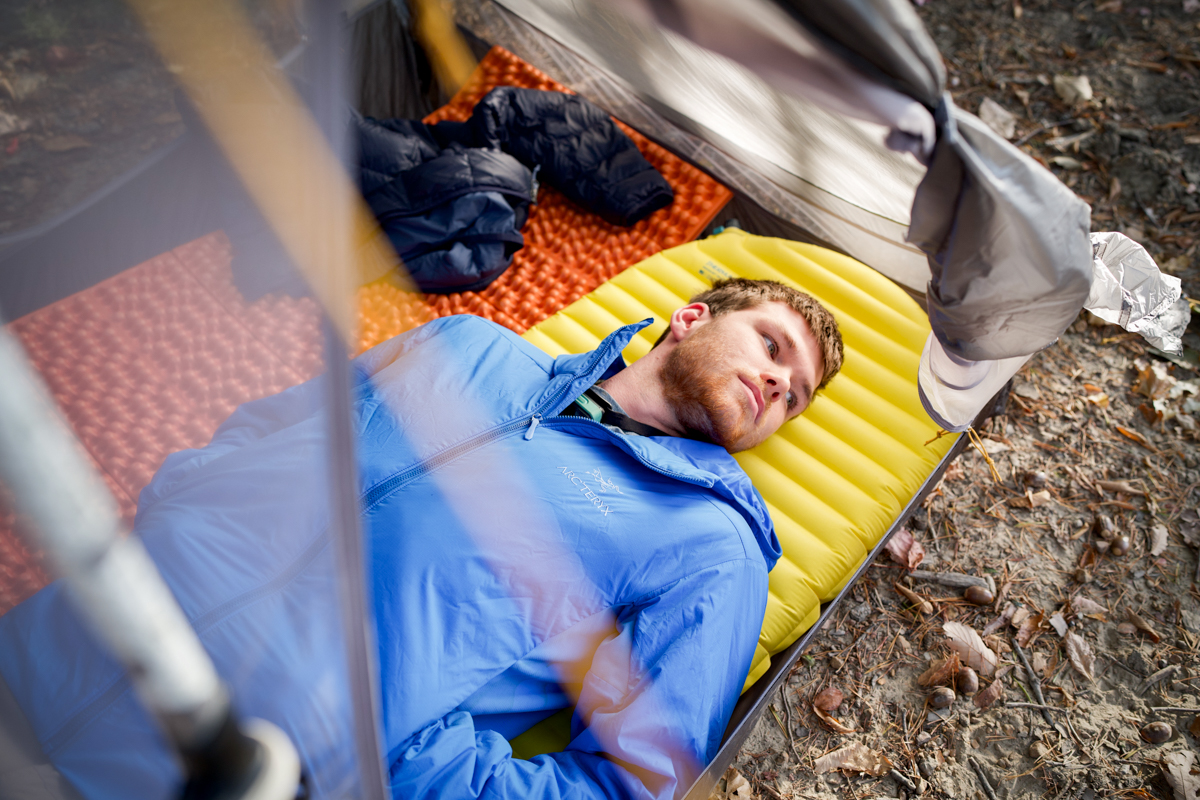
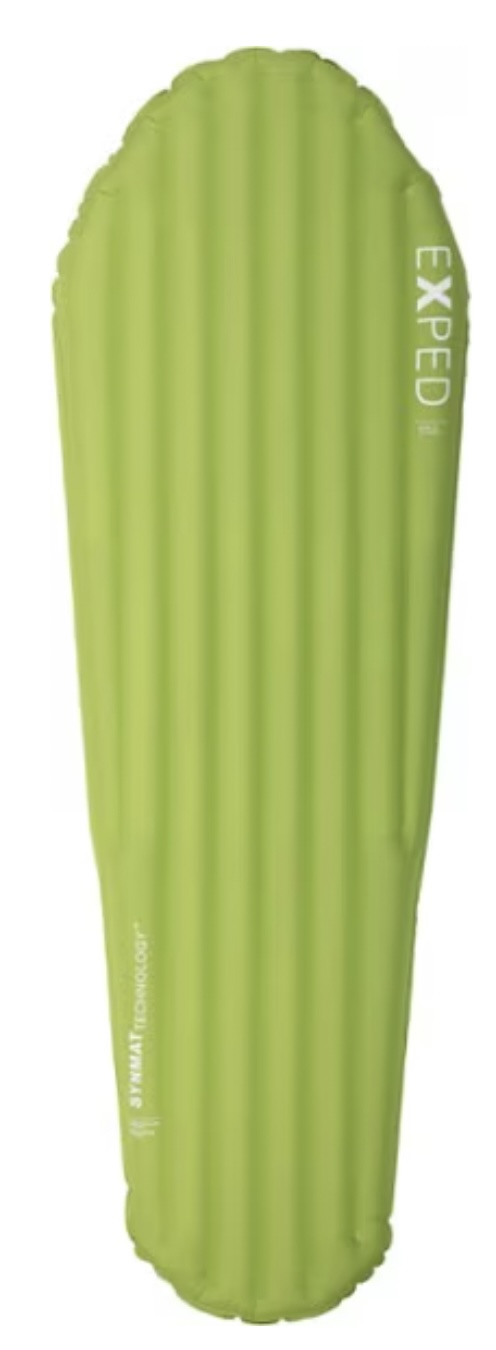 Category: Air pad
Category: Air pad
Weight: 12.9 oz.
Thickness: 2.8 in.
R-value: 2.9
What we like: A lightweight, affordable pad with vertical baffles to reduce potential seam failures.
What we don’t: On the narrow side, which makes the taper at the foot feel more extreme.
One of the first things we noticed about the affordable Exped Ultra 3R Mummy was the vertical baffles, which look quite different from the horizontal baffles of the Therm-a-Rest NeoAir line or the waffle patterning from Nemo and Sea to Summit. Exped says these can expand the life of the pad by reducing the number of welds (a common point of seam failure), and so far, we've had excellent luck with this tough and lightweight pad. The 20-denier surface fabric is middle of the road for a lightweight pad, and helps contribute to the 12.9-ounce weight. The Ultra 3R also has two valves—one for inflating and one for deflating. This speeds up the deflation process, similar to Sea to Summit's flat-lock valves (instead of two valves, Sea to Summit has one dual valve).
Aside from the lower R-value of 2.9 and thinner material, there isn't a lot not to like about the Ultra 3R, especially considering it costs a solid $90 less than the similarly warm and lofted Nemo Tensor Elite below. We have heard about some long-term durability issues with the Exped, with the valve leaking air and becoming somewhat difficult to seal after inflating, but if you don't mind the narrow (13.8-in.) foot area (the shoulder is a standard 20.5 in.), then this is an affordable, comfortable pad with a reasonable warmth rating for three-season backpacking. Exped also offers the Ultra 5R (1lb. 4 oz., $160), which has a 4.8 R-value, making it another affordable option with more warmth.
See the Exped Ultra 3R Mummy

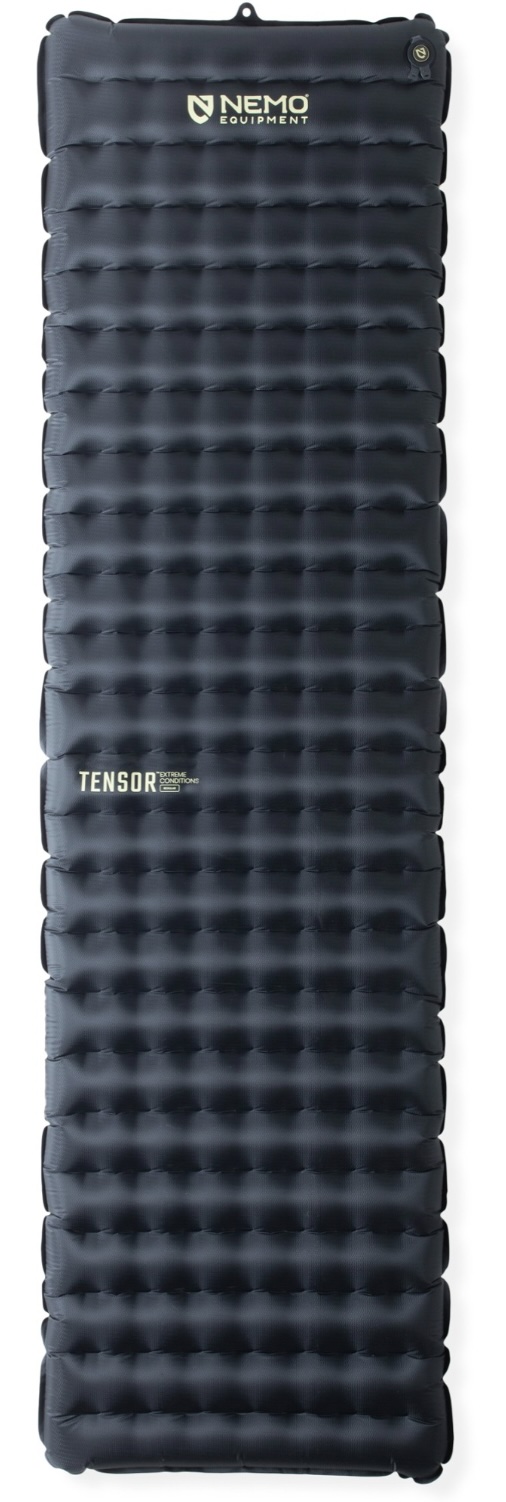 Category: Air pad
Category: Air pad
Weight: 1 lb. 2 oz.
Thickness: 3.5 in.
R-value: 8.5
What we like: Unparalleled warmth-to-weight ratio for the coldest temps.
What we don’t: The surface material is a little slippery.
For just 18 ounces (going over our unofficial 16oz. weight limit is worth it here), the Nemo Tensor Extreme Conditions provides 3.5 inches of supportive, densely cushioned baffles that feel springy and keep you well protected from the ground. This pad has the highest R-value in its category, with incredible heat retention thanks to the Thermal Mirror film deployed in Nemo's "Apex" baffling. Basically, four layers of thermal film are layered over trapezoid-shaped truss supports, which increase the surface area compared to standard rectangular trusses without much weight penalty. Nemo further reduced the weight (and increased the thermal efficiency) by eliminating the need to weld each sheet of film in place thanks to a free-floating construction. It is a brilliant design that lands this at the top of its class for an extreme-weather ultralight pad.
With all this in mind, the Tensor Extreme is a highly specialized pad and sacrifices some comfort in bounciness and a slippery 20D top material, though the 40D bottom material is quite robust. Nemo's dense baffle design and impressive warmth-to-weight ratio edged the Therm-a-Rest XTherm NXT down a few slots in our lineup, but hikers looking to drop even more weight can consider the XTherm's 15.5 ounce / 7.3 R-value specs. For those sticking with the Nemo line, the Tensor Extreme is available in several sizes, including the Mummy for one ounce less, the Wide Regular (72 in. x 25 in. / 1 lb. 6 oz), and Wide Long (76 in. x 25 in. / 1 lb. 7 oz). It’s also worth checking out the Nemo Tensor All-Season below ($200), which has a 5.4 R-value and shaves 3.9 ounces from the Extreme.
See the Nemo Tensor Extreme
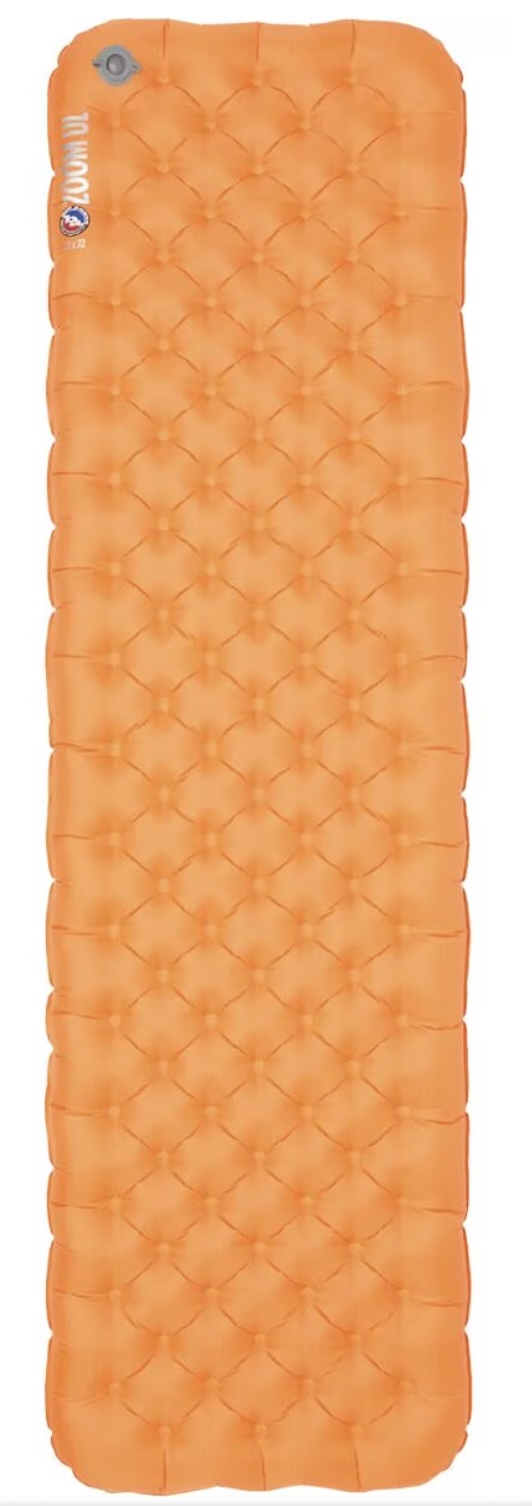 Category: Air pad
Category: Air pad
Weight: 14.0 oz.
Thickness: 3.25 in, 3.5 in.
R-value: 4.3
What we like: Loftier side chambers help keep you stable throughout the night.
What we don’t: Not as warm as other pads with the same claimed R-value.
The Big Agnes Zoom UL is the lightest pad in the brand's lineup, and by looking at the specs, it's worthy competition to the Therm-a-Rest NeoAir XLite above and Nemo Tensor All-Season below. But this pad remains high on our list as our favorite side-sleeper pad thanks to 3.5 inches of cushion in the outer rails, which helps keep active sleepers in place, and the 3.25-inch thickness of the rest of the pad. The caveat here is that when the pad is inflated enough to prevent your hips from hitting the ground, it makes for a stiffer and less forgiving cushion. The O-beams and variable thickness do help side sleepers stay in place without rolling off the pad though, and the two layers of reflective film on the trusses are used similarly to the Nemo Tensor line to help increase thermal efficiency.
We had a few gripes with this pad during testing, which we can attribute to Big Agnes focusing on impressive specs to the detriment of some aspects of usability and performance. This pad packs down small, but it can be extremely challenging to get back into the stuff sack. And while that's a minor inconvenience, our main issue is that we found the Zoom UL to be significantly less warm than sleeping pads with similar claimed R-values. We took the Zoom backpacking during fairly mild conditions and still felt cold conducting from the ground, and on a later trip into the Canadian Rockies, we were quite cold as the temperatures dipped into the high 30s Fahrenheit. If you're worried about temperature, we would recommend the more accurately warm NeoAir XLite above over this pad. But for moderate conditions and those who prioritize comfort for side sleeping, the Zoom UL is still a solid bet.
See the Big Agnes Zoom UL

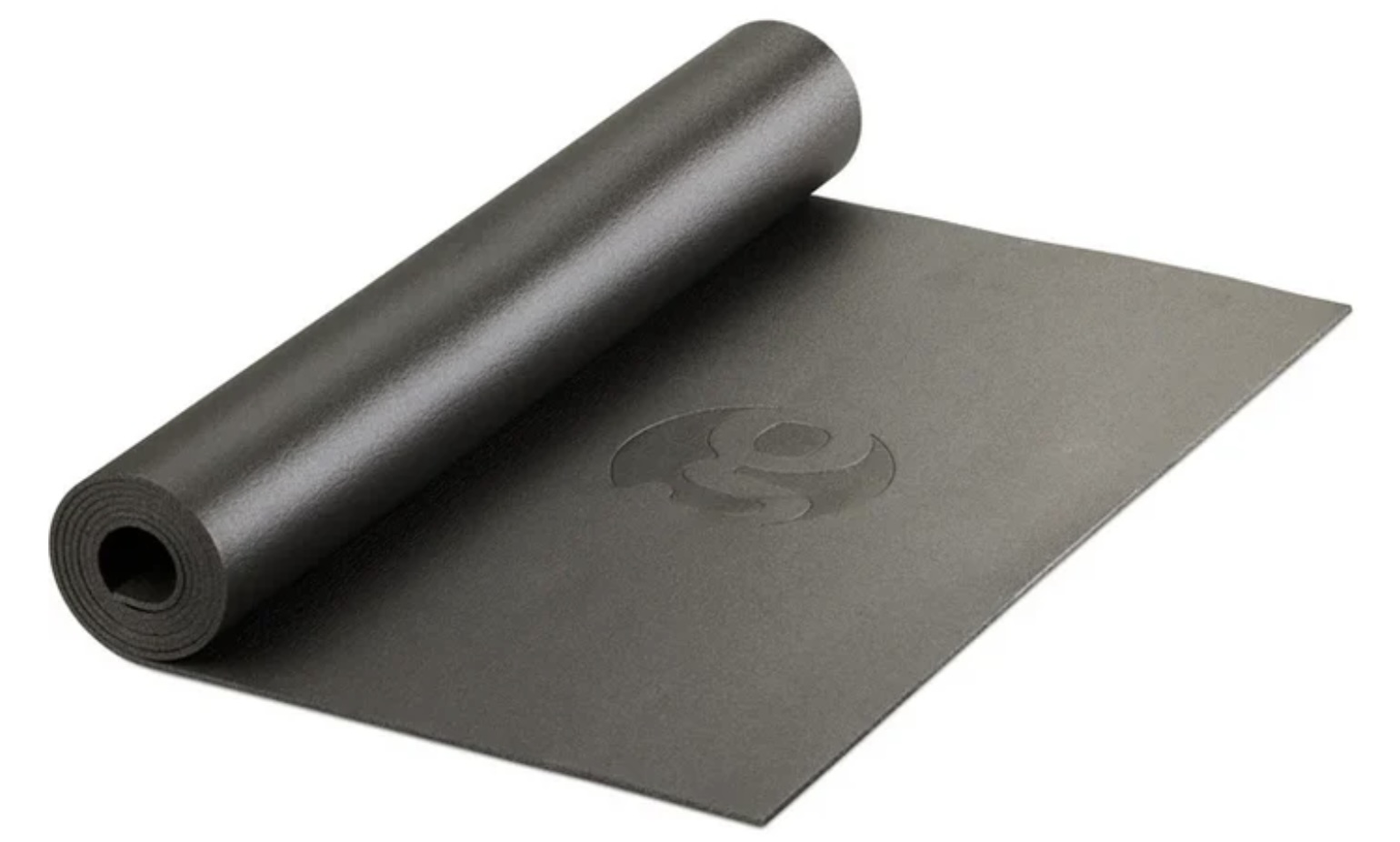 Category: Foam
Category: Foam
Weight: 2.7 oz.
Thickness: 1/8 in.
R-value: 0.5
What we like: A versatile extra pad that can also be used as a sit pad or pack support.
What we don’t: Has limited warmth and ground protection and is best used in a pinch or as a backup.
For true minimalists—fast packers, record-setters—a sleeping pad is little more than the merest bit of protection from the ground, and the 2.7-ounce Gossamer Gear ThinLite does the trick in that regard. Available in several varieties (including rolled and folded), this pad has multiple uses beyond ground cushion. We've used it to add extra insulation to our existing sleep system and as a sit pad during on-trail breaks. The rolled version tucks into the side pocket of many backpacking packs, and the folded version can double as a back panel for Gossamer Gear packs like the G4-20 and Mariposa. We've also used this to add a layer of protection for more fragile ultralight air pads, protecting against sharp rocks and desert spines.
The downsides to this pad are clear. With an R-value of .5 and just a 1/8-inch thickness, this doesn't compare to full sleeping pads. We recommend this only for the most ultralight backpackers, or as a backup to your air pad. We've also tested a similar option from Outdoor Vitals, but we found the Gossamer Gear version to hold up somewhat better over the course of a season. Neither pad is going to last forever, but our Outdoor Vitals pad suffered gashes and chunks torn out from narrow passageways and rugged surfaces. You won't go wrong with either as a spare pad, but overall, we recommend the slightly more reinforced, updated surface of the Gossamer Gear ThinLite.
See the Gossamer Gear ThinLite Foam Pad

 Category: Closed-cell foam
Category: Closed-cell foam
Weight: 14.5 oz.
Thickness: 0.9 in.
R-value: 2.0
What we like: Cheap and will never pop; thicker than the Therm-a-Rest Z Lite.
What we don’t: Not nearly as comfortable as an inflatable sleeping pad.
Closed-cell foam pads like the Nemo Switchback are a polarizing choice. Revered by thru-hikers and desert hikers for their indestructible build and zero-effort unfolding, they are simply not as comfortable as inflatable air pads. In fact, some people use these as backup for extra warmth and durability when paired with an ultralight air pad. But as a standalone, they don't provide the cushion or warmth of our favorite air pads. However, the ways in which these pads differ from air pads is exactly what makes them appealing. They require zero effort to unfold, saving you time and energy at the end of a long day compared to inflating an air pad, and you can't pop them. Plus, they can be used instantly as a sit pad during breaks on the trail.
Nemo's Switchback is really the only direct competitor to the Therm-a-Rest Z Lite Sol below, and we put the Switchback higher on this list thanks to a slightly thicker build (0.9 in. compared to 0.75) with the same weight. The Switchback also has a little more cushion and doesn't compress over time as much as the Z Lite. Even so, you're still going to feel rocks and roots underneath you, and we don't recommend these for side sleepers. Plus, with an R-value of 2, it's definitely a warm-weather pad. All that said, these are wildly popular with weight-and effort-conscious thru-hikers, and the durability and convenience can't be beat. Lastly, if you're looking for a budget-friendly pad for added cushion or to protect your ultralight air pad, Exped makes the FlexMat ($40), which doesn’t pack up as small as the Switchback or Z Lite and has a thinner build with an R-value of 1.5.
See the Nemo Switchback
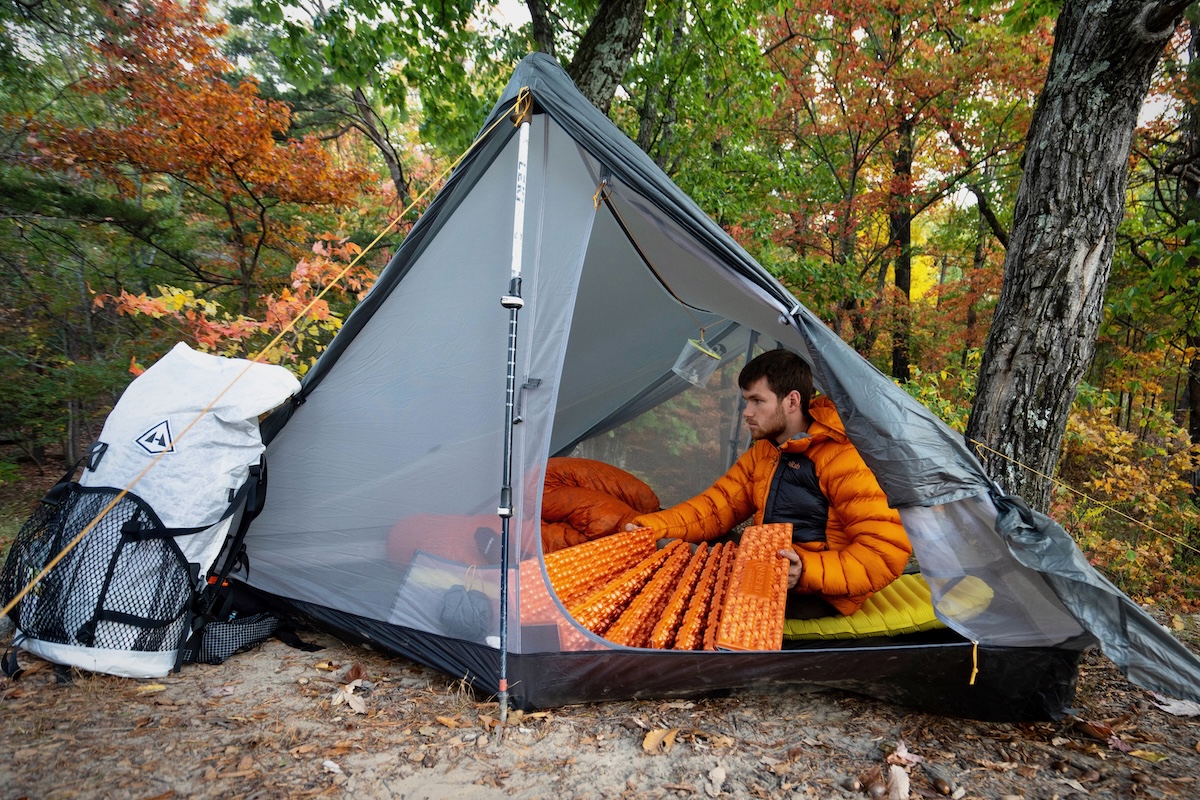
 Category: Air pad
Category: Air pad
Weight: 8.5 oz.
Thickness: 3.0 in.
R-value: 2.4
What we like: Mylar lining and internal truss system allow for impressive loft and low weight.
What we don’t: The 10D face fabric is the thinnest on our list and requires extra care.
With three inches of loft, Nemo's stable gridded baffles, and an unbelievably low weight of just 8.5 ounces for the regular mummy size, the Tensor Elite is an impressive addition to the ultralight sleeping pad category. Like the other pads in the Tensor line, Nemo uses their Apex baffles, which utilize a mylar truss layering system to maintain loft with minimal weight. This is similar to the triangular layering of Therm-a-Rest's NeoAir line, allowing these pads to have impressive height for their tiny packed size (compared to pads that use insulation like Sea to Summit and Klymit). The Tensor Elite relies on only one layer of thermal mirror film positioned at the top of the baffle, which means they could further reduce weight by using a streamlined baffle shape instead of trapezoidal baffles. This, in combination with the 10D Cordura, helps reduce weight even further to the lowest on our list besides Gossamer Gear's minimal foam pad.
The Tensor Elite is still relatively new to the scene, so we don't yet have long-term data on the build quality. And, as with any ultralight piece of gear, there are some tradeoffs. The 10D Cordura ripstop nylon is durable, but less so than the thicker materials on other lightweight pads—though most will add 4 more ounces to your pack. Ultralight items are often a toss-up between weight savings and durability, but we've been careful with our Tensor Elite and haven't experienced any punctures or failures. Our tester used this on a climbing trip where weight was critically important and would recommend it for portaledge use and ultralight backpacking... as long as you don't thrash around too much. Lastly, this pad has less thermal protection than others on this list— we wouldn't recommend a 2.4 R-value pad for much more than moderate temperatures. But if the temps will be on the milder end and you're counting every ounce, this is a compelling option.
See the Nemo Tensor Elite
 Category: Air pad
Category: Air pad
Weight: 1 lb. 0.6 oz.
Thickness: 3.9 in.
R-value: 4.1
What we like: Nearly 4 inches of loft paired with air-spring cells and thermal insulation make for a warm, lightweight package.
What we don’t: The warmth-to-weight ratio doesn't totally hold up for the most discerning ultralighters.
Comfort doesn't have to take a backseat with lightweight gear, and while Sea to Summit's new Ether Light XR weighs just over one pound for the regular mummy, its plush cushioning and body-conforming air-sprung cells can make the extra few ounces worth it. Sea to Summit achieves these specs by using ultralight layers of TRM material, a quiet, reflective fabric that radiates your heat back to you without excess bulk or weight. These layers also help create the pad's structure, with honeycombed cells that reduce air movement within the pad and help cradle your body. For an ultralight pad, these cells get us the closest to feeling like we're sleeping on a mattress at home. The Ether Light XR uses Sea to Summit's reliable Xpress valve with welded seams to reduce leaks and failures, provide fast inflation, and allow for microadjustment of air levels via the two-way valve. In the morning, opening both valve closures deflates this pad almost instantly.
By specs alone, this pad doesn't look as impressive as the 13-ounce, 4.5 R-value Therm-a-Rest NeoAir XLite NXT above or the 14.1-ounce, 5.4 R-value Nemo Tensor All-Season below. But again... comfort. The Ether Lite XR inflates with significantly fewer breaths than either of those pads, and the structure feels more comfortable for a good night's sleep, with less rolling around than the stiffer NeoAir. Sea to Summit offers this pad in 5 sizes, with the regular length measuring 6 feet and the small measuring 5 feet 6 inches. You save less than one ounce by going for the shortest option though, so for all but the shortest campers, we recommend opting for the regular length.
See the Sea to Summit Ether Light XR
 Category: Air pad
Category: Air pad
Weight: 14.1 oz.
Thickness: 3.5 in.
R-value: 5.4
What we like: Slightly thicker, warmer, and cheaper than the NeoAir XLite above.
What we don’t: Small drop in comfort with last year's update; still heavier and bulkier than the Therm-a-Rest.
Another excellent contender from Nemo's Tensor line is the All-Season Ultralight Insulated. This is one of the top-rated sleeping pads in our backpacking sleeping pad roundup, combining a lightweight, packable build with a comfortable sleeping platform and 3.5 inches of cushion. This pad also includes Nemo’s Vortex pump sack, which some ultralighters will choose to leave behind. But for just a few ounces, it makes inflation significantly easier: Just snap it onto the inflation valve, blow lightly into the opening, and roll down the collar to force air into the mat. All in all, the Tensor’s blend of comfort, build quality, and ease of use makes it a standout on the market.
Nemo recently updated the Tensor collection, and the latest All-Season is more competitive than ever. In addition to a boost in warmth (R-value went from 4.2 to 5.4) and thickness (from 3 to 3.5 in.), Nemo managed to trim 0.4 ounces off the pad’s weight while increasing durability with a thicker fabric on the bottom. Our only real complaint is that the nylon build has a slightly less supple feel than the past version’s polyester shell. The Tensor is also still 1.1 ounces heavier than the NeoAir XLite above and doesn’t pack down as small, plus the packed size got a little bigger with the update. But overall, we think the changes were a net positive. We're impressed with the entire Tensor line, including the 8.3-ounce Tensor Elite (8.5 oz., 2.4 R-value) and Tensor Extreme (1 lb. 2 oz., 8.5 R-value) above.
See the Nemo Tensor All-Season
 Category: Air pad
Category: Air pad
Weight: 15.5 oz.
Thickness: 3.0 in.
R-value: 7.3
What we like: High R-value for below-freezing conditions; quieter design than past models.
What we don’t: On the expensive side, and still a bit bouncy.
The lightest winter-ready ultralight sleeping pad on our list, Therm-a-Rest's classic and reliable sub-one-pound pad with a 7.3 R-value is ideal for high-altitude climbers and long-distance four-season backpackers. This winter-worthy pad has a similar design to our top-rated NeoAir XLite but increases the layers of ThermaCapture, which mimic an internal emergency blanket by reflecting back your body heat. And like the XLite, the XTherm NXT features new technology that delivers a quieter sleep than the outgoing version, as well as a more efficient WingLock valve for inflating and deflating.
This is an impressive sleeping pad that you can get away with having as your only model if you tackle a lot of cold-weather trips. The 15.5-ounce weight is beyond reasonable, and most conditions aren't going to call for an R-value of more than the 7.3 offered here. So why did this pad lose out to the Nemo Tensor Extreme for our top winter pad? It was a close call, but we've found Nemo's baffle shape to be slightly more comfortable and less bouncy, and for just 2.9 extra ounces, you get more surface area with the Extreme's rectangular model and an 8.5 R-value compared to 7.3. Still, the XTherm is lighter and more packable than the vast majority of sleeping pads on the market and quite hardwearing with its 70-denier bottom. If you need extra warmth and durability and only want one go-to pad, the XTherm NXT is an exceptional cold-weather standout for serious adventurers.
See the Therm-a-Rest NeoAir XTherm NXT
 Category: Air pad
Category: Air pad
Weight: 1 lb. 0.9 oz.
Thickness: 2.0 in.
R-value: 3.1
What we like: The air-sprung cells are closely spaced and lightly insulated for a highly supportive platform.
What we don’t: Doesn't pack down as small as others; 2-inch thickness might not be enough for side sleepers.
Though just 2 inches thick, this pad is deceptively well-cushioned thanks to Sea to Summit's plush air-sprung cells. These cells are meant to mimic the pockets in a standard mattress, consisting of tiny, interconnected chambers that conform to different body parts and sleeping positions. This results in a more supportive feel than some airier mattresses and is a favorite even amongst our most weight-conscious testers. While you get dinged with a minor increase in weight and packed size, that's a fair trade for people who don't like bouncier pads. Sea to Summit does offer loftier / lighter mats than this one, but the combination of comfort, ease of inflation, and durability of the 30D / 40D surface materials makes it our go-to from this brand. The Ultralight Insulated Air inflates in just 10 breaths, and the lie-flat valve is microadjustable and offers instant deflation in the morning.
For weight weenies, this pad might be a non-starter. On paper, it has a less impressive weight-to-warmth ratio compared to others on our list (the NeoAir XTherm above weighs just 15.5 ounces with an R-value of 7.3), and it doesn't pack down as small, thanks to the use of actual insulation materials. That said, the design of these cells makes for some of the most comfortable we've slept on, and the tougher face fabric has held up to dozens of nights in the desert. If you don't mind trading a few ounces for the springy support, this is a great option. Sea to Summit also offers this pad in a women's version, which offers shorter lengths and ups the R-value to 3.5 for the same price.
See the Sea to Summit Ultralight Insulated Air See the Women's Ultralight Insulated Air
 Category: Closed-cell foam
Category: Closed-cell foam
Weight: 14.0 oz.
Thickness: 0.75 in.
R-value: 2.0
What we like: Durable, convenient, and lightweight.
What we don’t: The Nemo Switchback above is thicker and more comfortable.
Similar to the Nemo Switchback above, Therm-a-Rest’s Z Lite Sol is a backpacking classic. This basic 3/4-inch pad features tough closed-cell foam, a reflective coating for a boost in warmth, and a budget-friendly price of $60. Further, the pad folds up accordion-style into a reasonably compact package for storing on the top, side, or bottom of a pack. As with the Nemo Switchback above, the Z Lite is not a leader in terms of comfort, but it’s hard to ignore the dependability of a cheap foam mat.
You’ll see the Therm-a-Rest Z Lite Sol strapped to a surprisingly high number of packs, and there's no particular reason this pad is so far down on the list besides its less comfortable and doesn't have a fantastic warmth-to-weight ratio. Really, foam pads are the best choice for durability and convenience. Ultralighters love the low weight and dependability, budget backpackers love the price, and winter campers use it as a second mat for a boost in warmth. In the end, the Switchback above beats out the Z Lite in comfort with its thicker, more plush design, but the Z Lite is the proven choice that still gets the slight edge in weight (14 oz. vs. 14.5 for the Nemo).
See the Therm-a-Rest Z Lite Sol
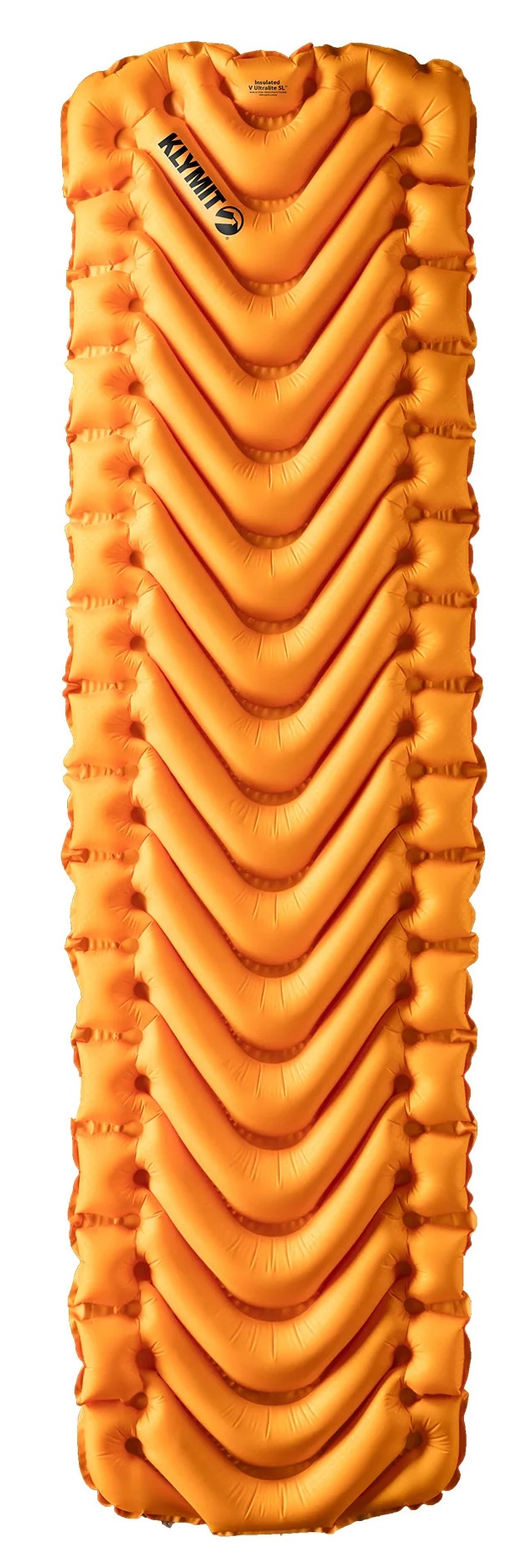 Category: Air pad
Category: Air pad
Weight: 15.9 oz.
Thickness: 2.5 in.
R-value: 1.9
What we like: A budget-friendly, impressively warm, and lightweight sleeping pad.
What we don’t: Lower loft and stiffer than similarly warm pads, which means side sleepers might feel the ground.
A reliable, lightweight sleeping pad can be a financial hit to the kit, and a durable model that provides good specs and a comfortable night's sleep isn't going to be cheap. That said, in a category that easily reaches upwards of $200 for an air pad, Klymit's budget-friendly Insulated V Ultralite SL has impressive specs across the board, a durable surface material, and a variation in side rails and baffle patterning for more sleeping stability. The unique V-shaped design felt supportive during testing, and the pad inflates quickly thanks to the help from synthetic chamber insulation and deep grooves between baffles (less space to fill).
That said, this isn't the springiest or softest pad we've slept on. Fully inflated, it feels stiffer than body-cradling designs like the Big Agnes Zoom UL and Sea to Summit Insulated UL above, and while we didn't necessarily feel the ground under us thanks to the deep baffles and insulation along the bottom of the chambers, it has less of a "mattress" feel than the premium brands. It does have fairly standard 72-by-20-inch dimensions, but the 2.5-inch height combined with stiffer baffles is where you lose plushness. However, it took us less than 10 breaths to inflate each night thanks to a similarly designed valve as the updated Therm-a-Rest—one of the fastest inflations on this list. So if you want to save $70 over the Therm-a-Rest NeoAir XLite above and don't plan on taking trips in colder temperatures, this is a solid choice.
See the Klymit Insulated V Ultralite SL
| Sleeping Pad | Price | Category | Weight | Thickness | R-Value | Denier | Packed Size |
|---|---|---|---|---|---|---|---|
| Therm-a-Rest NeoAir XLite NXT | $210 | Air pad | 13.0 oz. | 3.0 in. | 4.5 | 30D | 4.1 x 9 in. |
| Exped Ultra 3R Mummy | $140 | Air pad | 12.9 oz. | 2.8 in. | 2.9 | 20D | 4.1 x 8.3 in |
| Nemo Tensor Extreme | $250 | Air pad | 1 lb. 2 oz. | 3.5 in. | 8.5 | 20D/40D | 4 x 7.5 in. |
| Big Agnes Zoom UL | $180 | Air pad | 14.0 oz. | 3.25 in. | 4.3 | Unavail. | 4 x 8 in. |
| Gossamer Gear ThinLite | $22 | Foam | 2.7 oz. | .2 | .5 | N/A | 3 x 19 in. |
| Nemo Switchback | $60 | Foam | 14.5 oz. | .9 in. | 2.0 | N/A | 6.8 x 11 in. |
| Nemo Tensor Elite | $230 | Air pad | 8.5 oz. | 3.0 in. | 2.4 | 10D | 3 x 5.5 in. |
| Sea to Summit Ether Light XR | $199 | Air pad | 1 lb 0.6 oz. | 3.9 in. | 4.1 | 30D/40D | 4.3 x 8.1 in. |
| Nemo Tensor All-Season | $230 | Air pad | 14.1 oz. | 3.5 in. | 5.4 | 20D/40D | 4 x 10 in. |
| Therm-a-Rest NeoAir XTherm | $240 | Air pad | 15.5 oz. | 3.0 in. | 7.3 | 70D | 4.5 x 9 in. |
| Sea to Summit UL Insulated Air | $179 | Air pad | 1 lb. 0.9 oz. | 2.0 in. | 3.1 | 30D/40D | 5 x 9.5 in |
| Therm-a-Rest Z Lite Sol | $60 | Foam | 14.0 oz. | 0.75 in. | 2.0 | N/A | 5.5 x 20 in. |
| Klymit Insulated V Ultralite SL | $140 | Air pad | 15.9 oz. | 2.5 in. | 1.9 | 20D | 4.5 x 7 in. |
Several editors on the Switchback Travel team are ultralight backpackers, high-alpine travelers, and thru-hikers. Sometimes all three. And that means a solid emphasis on both saving weight in the pack as well as getting a good night's sleep in the backcountry. Plus, we need our gear to last many nights and hundreds of miles. Thru-hiker and weight weenie Maggie Slepian put this guide together, along with input from thru-hiker and alpine climber Chris Carter. Maggie began thru-hiking in 2015 on the Appalachian Trail (she used an early-edition Therm-a-Rest NeoAir XLite that took 35 breaths to inflate and sounded like a bag of potato chips) and has continued long-distance backpacking and thru-hiking in the years since, always with an ultralight sleeping pad. Chris is an alumnus of the Triple Crown, having completed the AT, PCT, and CDT, and also gravitates toward sleeping miles above sea level on precarious precipices where every ounce counts.
Our current lineup of 13 ultralight sleeping pads is a tighter list than the more generalized backpacking gear roundups. The ultralight world is relatively limited compared to standard gear, and even more so with sleeping pads. In fact, many cottage-industry brands we turn to for ultralight gear don't touch sleeping pads, which narrows the list down even further. To develop this initial list, Maggie came up with some basic guidelines: 16 ounces for three-season pads, aiming for an R-value of around 3.5 or more to be as versatile as possible, and well-cushioned for passing out after long days on the trail. As the market changes and we test more pads that don't compromise on durability and comfort, we'll continue to update this list.
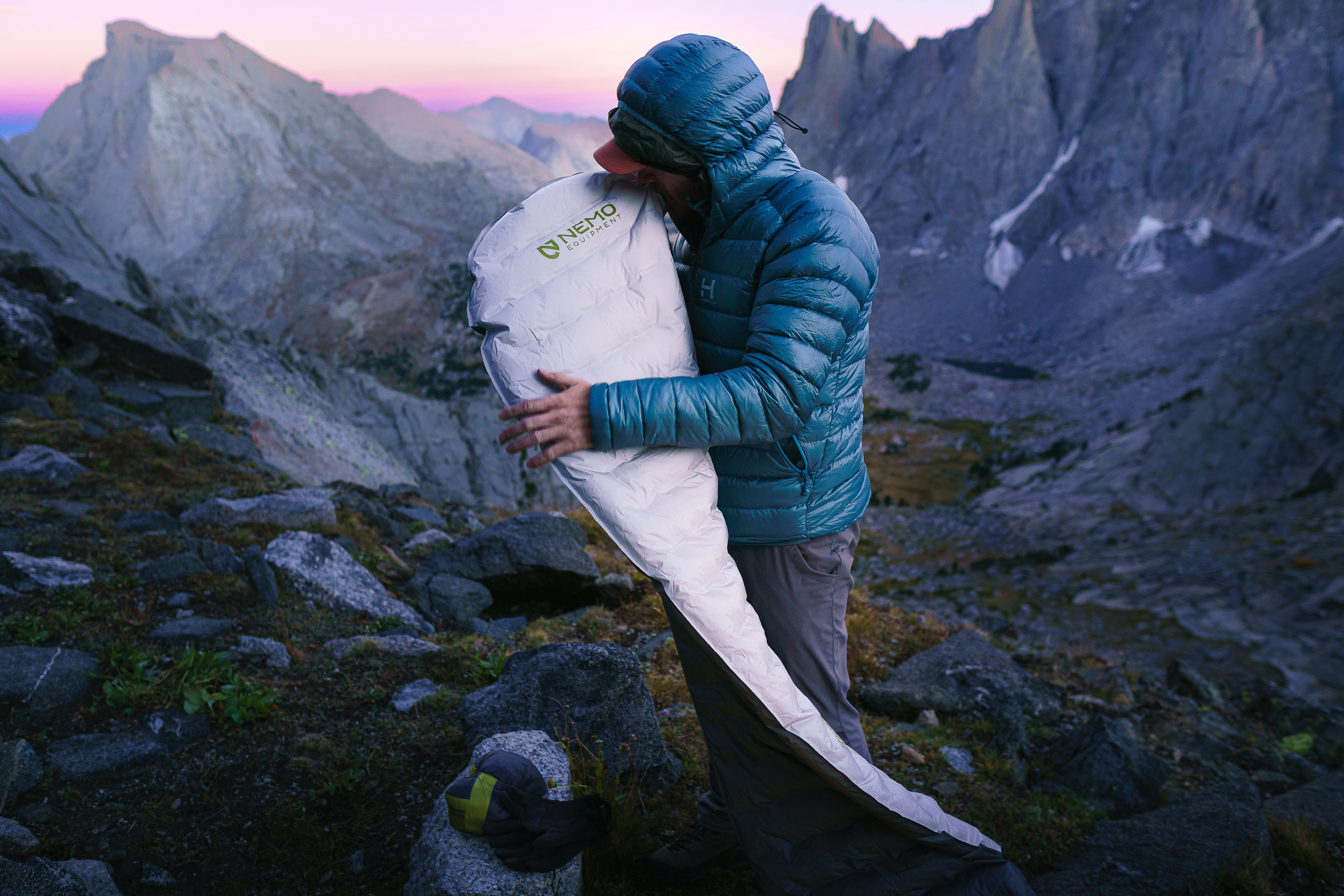
A lot of companies use ultralight as a buzzword, but in general, the metric for an ultralight sleeping pad should be no more than 16 ounces for a sleeping pad with a 3.5 R-value. Is this science? Not at all. And true ultralighters with an 8-pound base weight will likely consider a 16-ounce sleeping pad abhorrent. It all depends on your goals and overall pack weight, but note the overuse of the word "ultralight," and make sure you actually look at the specs for any product you're considering. For the purposes of the roundup, we stuck mostly to these specs, but allowed some wiggle room for standout contenders or winter-ready pads with higher R-values. We've found the best models are between 12-16 ounces and are solid for three-season warmth. This allows you to save weight without compromising too much on materials, warmth, and comfort. For comparison, our primary backpacking sleeping pad review has pads weighing an average of 19.8 ounces, and this roundup averages out to 13.58 ounces each.
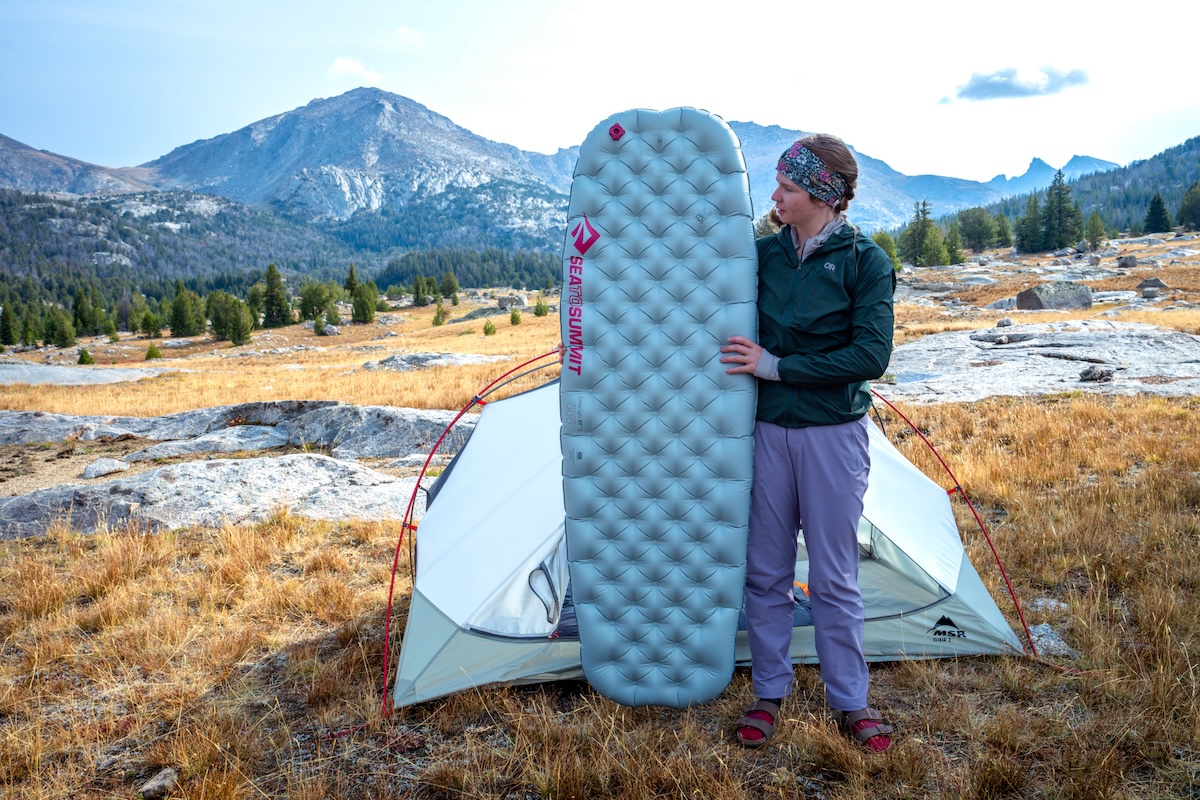
Air Pads
Backpacking sleeping pads fall into three general categories: air, self-inflating, and closed-cell foam. Air pads offer unmatched compactness, often rolling down to the same size as a Nalgene bottle. They’re also the lightest option while at the same time providing more thickness. Bonded insulation or baffling techniques can bring impressive warmth, highlighted by the Therm-a-Rest XTherm NXT, which has an R-value of 7.3. The primary downside is a greater puncture risk, and it’s a big consideration. Middle-of-the-night deflations can ruin a trip really fast. Bringing along a patch kit should alleviate most concerns, but it’s still the biggest reason not to buy an air pad.
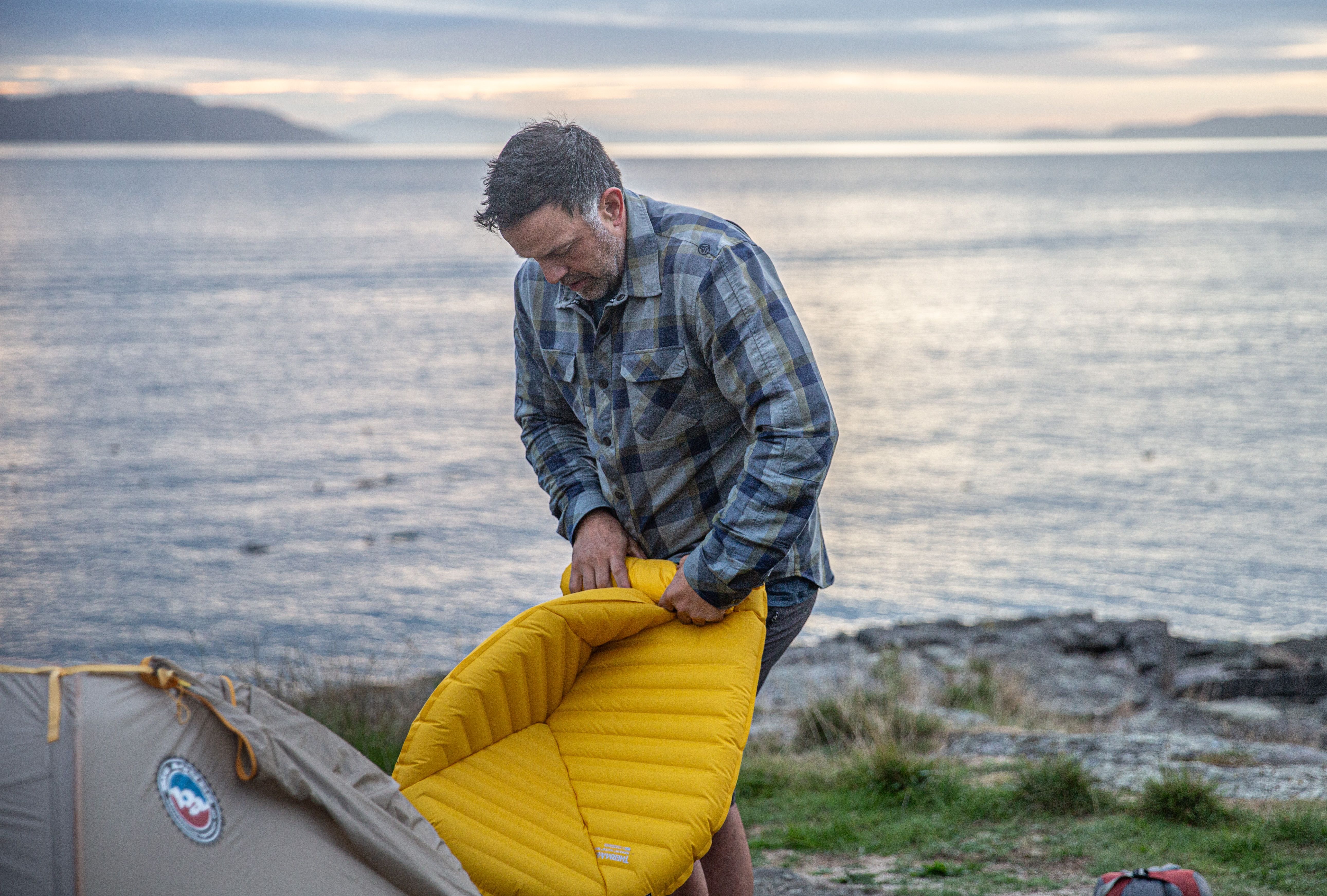
Foam Pads
Designs like the Therm-a-Rest Z Lite Sol and Nemo Switchback are staples for long-distance trekkers and thru-hikers due to their versatile, lightweight constructions, but side sleepers and backpackers used to the luxury of a 3-inch inflatable air pad won't feel nearly as comfortable. But the old closed-cell foam pads are still a dependable, durable, tried-and-true option. Yes, they’re the least comfortable option, don’t pack as small, and don’t have the highest R-values, but they also have exactly a zero percent chance of deflating in the middle of the night. And they’re the perfect secondary pads to bring along for winter camping or where you want extra protection for an ultralight inflatable pad in the desert.
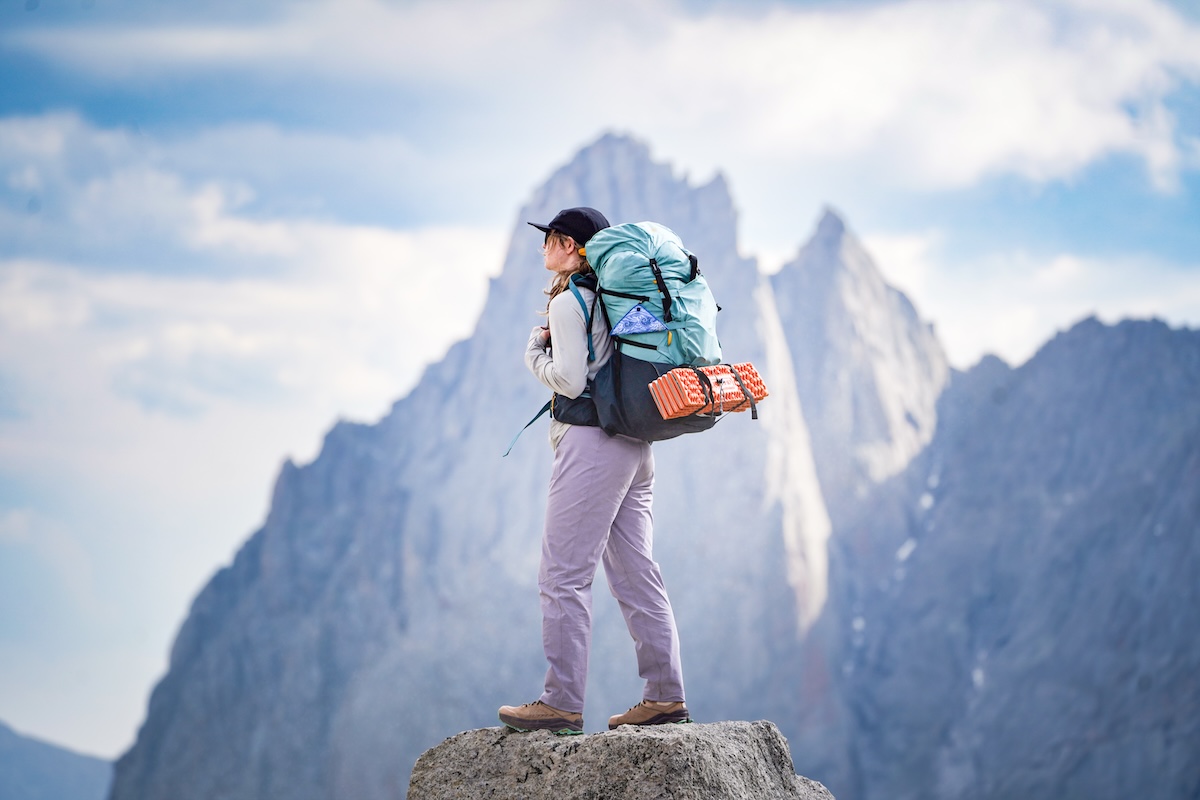
Self-Inflating Mats
The self-inflating mattress was a revolutionary idea when the Therm-a-Rest was launched in 1972. By combining open-cell foam and a space for the pad to expand and fill with air, it brought convenience, decent durability, and comfort. It’s a testament to that technology that most of today’s self-inflating pads haven’t deviated much. Compared with air pads, self-inflating options (like the Therm-a-Rest Trail ProLite) are more puncture-resistant than an air pad, and you'll still have some semblance of padding if it deflates in the middle of the night. However, the foam adds weight and this style doesn't pack down as small as an equivalent air pad. Backpacking options are also often not as thick (exceptions include Sea to Summit's SI line), leading to complaints from side sleepers. For all these reasons, our ultralight lineup doesn't currently include any self-inflating options.
The most common measure of durability in the outdoor gear world is denier (D), which measures the thickness of a fabric. You'll see this on everything from rain gear to sleeping bag material to sleeping pad face fabric. The higher the denier, the tougher the material will be, and the more the pad will weigh. This goes hand in hand with taking care of your ultralight gear, and the lighter your pad, the more likely it is that the denier will be lower and the material thinner. The thinnest denier material on our list is the 10-denier face fabric on the 8.5-ounce ultralight Nemo Tensor Elite. The Nemo Tensor Extreme and the Exped Ultra 3R both use 20D materials, and many Sea to Summit pads use a lighter material on the top of the pad and a more durable material on the bottom. This helps prevent punctures from where you lay the pad on the ground—just be sure to have it on the correct side when you inflate it. The toughest material on our list is the 70-denier base of the Therm-a-Rest NeoAir XTherm, which then reduces weight with 30D material on top.
Ultralight backpacking pads are thinner and less plush than standard backpacking pads, and certainly less luxurious than front-country models. But the latest outdoor gear technology has made advances in this department, and we've found that Sea to Summit’s Air Sprung Cells make for some of the most comfortable sleeping pads around, although they can’t quite compete with Therm-a-Rest in terms of weight-to-warmth ratio. You may notice a lot of chatter in product comments about being a back sleeper or a side sleeper. Back sleeping more evenly distributes your weight, whereas side sleeping puts a higher percentage of weight around the hips and shoulders. If you are a side sleeper or don’t sleep particularly well in the outdoors, check out a more substantial pad like the Sea to Summit Ether Light XR (3.9 in. thick). If you need serious cushion, consider one of the lighter options on our list of the best camping mattresses and pads.
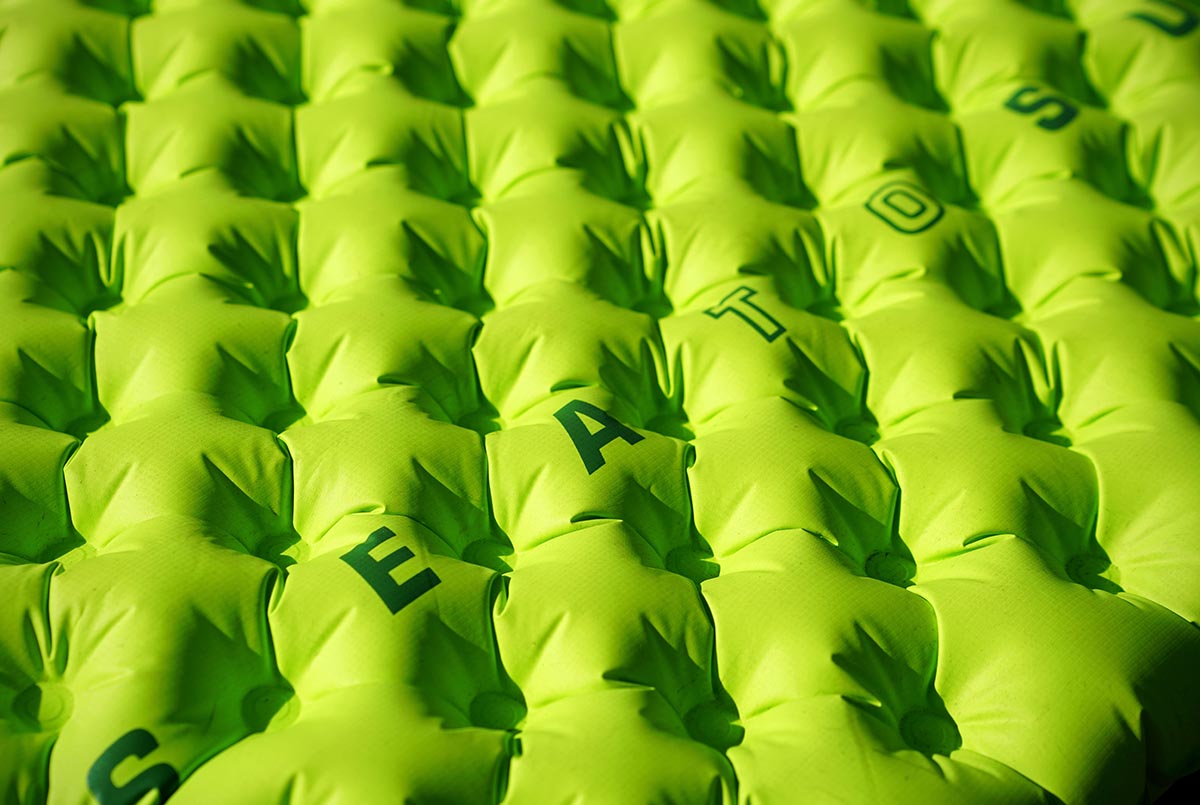
Baffle Design
You'll also see that the baffle designs vary between brands and product lines. In general, we’ve found that vertical baffles—like those found on the Exped Ultra 3R above—tend to be less supportive and comfortable than horizontal or boxed baffles, though you save welding areas and potential seam failures. On the flip side, we really like Sea to Summit’s Air Sprung Cells found on their Ultralight Insulated Air and Ether Light XR, which have a plush, supportive feel. Therm-a-Rest's more bouncy horizontal baffles have stellar loft for the small packed size and low weight, but some find them to be too bouncy. Overall, baffle shape and layout are largely a matter of personal preference, and it also comes down to priorities: cushion vs. weight vs. warmth.
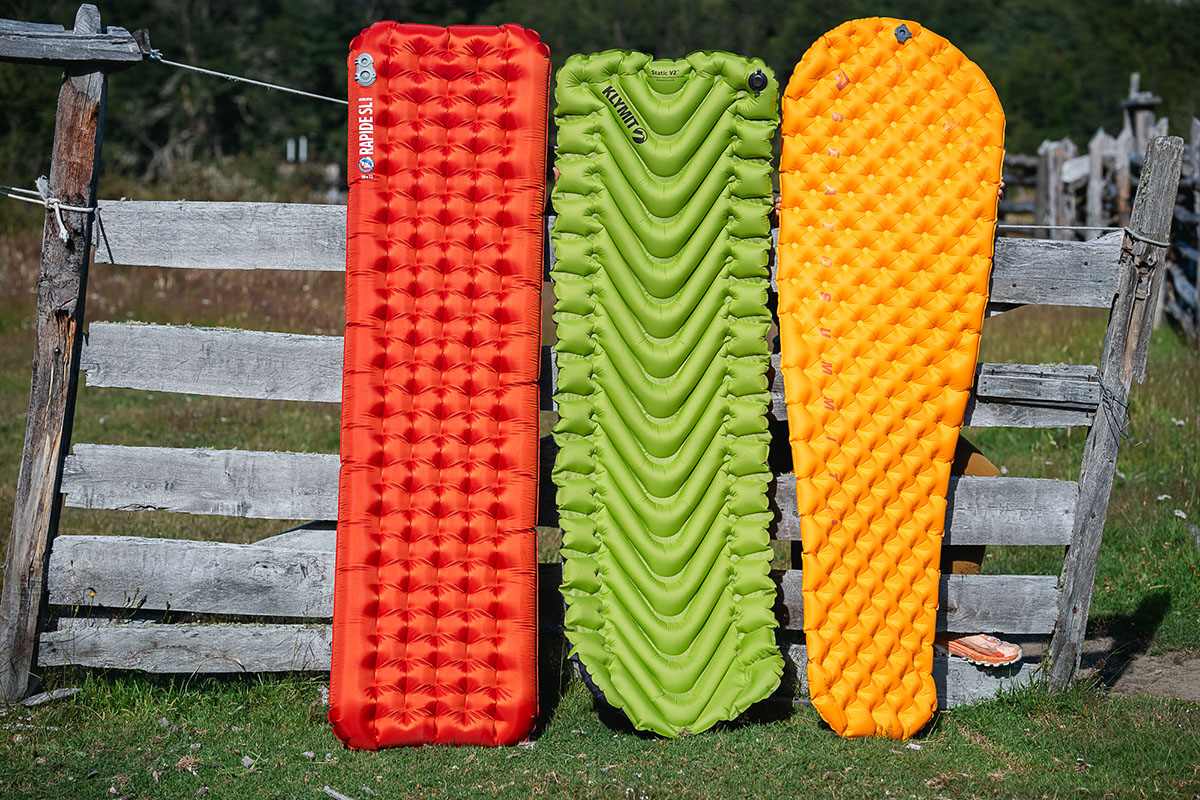
A critical spec in comparing sleeping pads is R-value, or how much insulation from the ground a pad provides. Don’t underestimate R-value: Using an uninsulated or too lightly insulated pad, even in cool temperatures, can make you quite cold throughout the night. And even a warm and thick sleeping bag won’t save you because your body compresses the insulation along the bottom of the bag, thereby letting cold air up and compromising its ability to keep you warm. To prevent this from happening, you’ll need a sleeping pad that offers an appropriate level of protection from the cold ground.
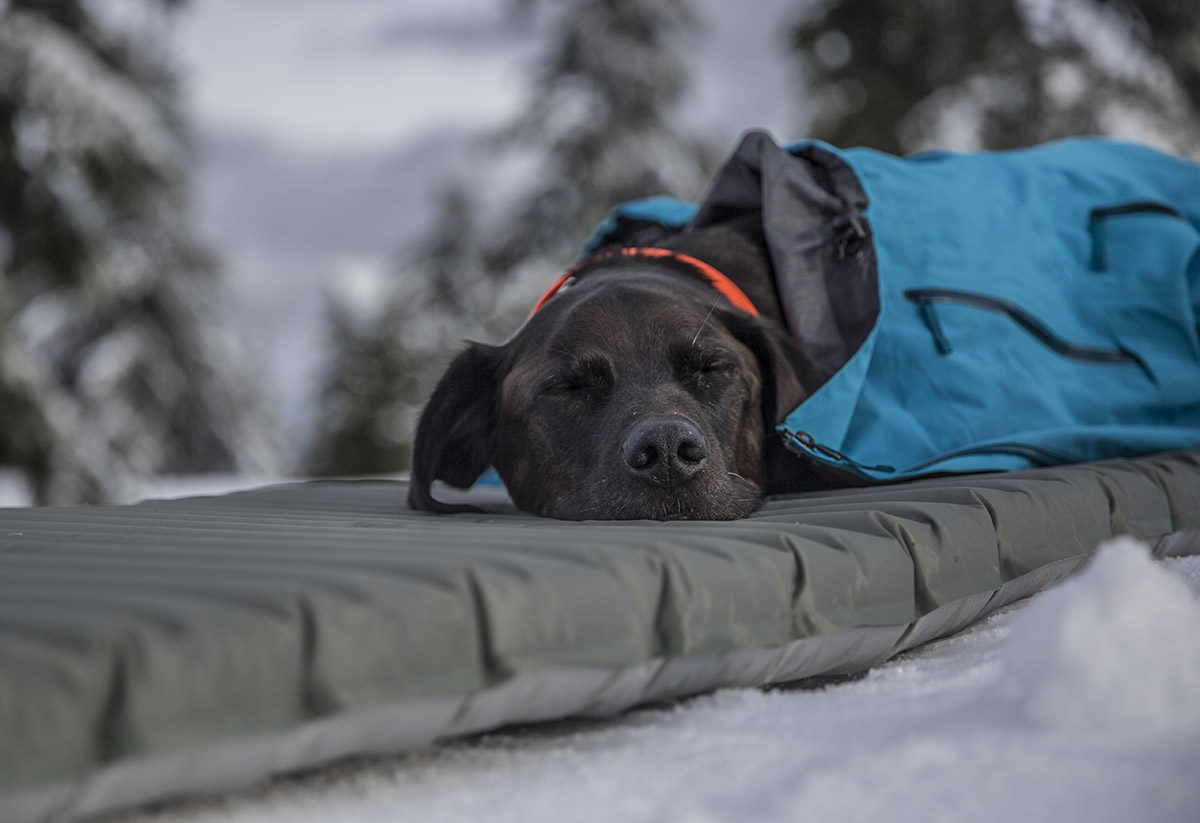
In terms of recommended ranges, summer-only backpackers who stick to warm conditions can get away with an R-value of 3 or less, and some warm-weather backpackers will feel comfortable with the 2.4 R-value of Nemo's Tensor Elite. Most 3-season backpackers should get a sleeping pad with an R-value in the range of 3 to 5, and this is where a majority of our ultralight picks land. For winter camping, you'll want an R-value that exceeds 5, with the most popular model being the Therm-a-Rest NeoAir XTherm (7.3 R-value) and the newer, impressive Nemo Tensor Extreme Conditions (8.5 R-value). If you will be camping on snow, it’s a good idea to bring a combination of pads, especially if one is of the inflatable variety (imagine waking up in the middle of the night on top of snow on a deflated balloon). For this reason, many winter campers bring along a closed-cell foam model like the Nemo Switchback or Z Lite Sol to be safe. For a deeper dive into this topic in general, see our article on Sleeping Pad R-Value Explained.
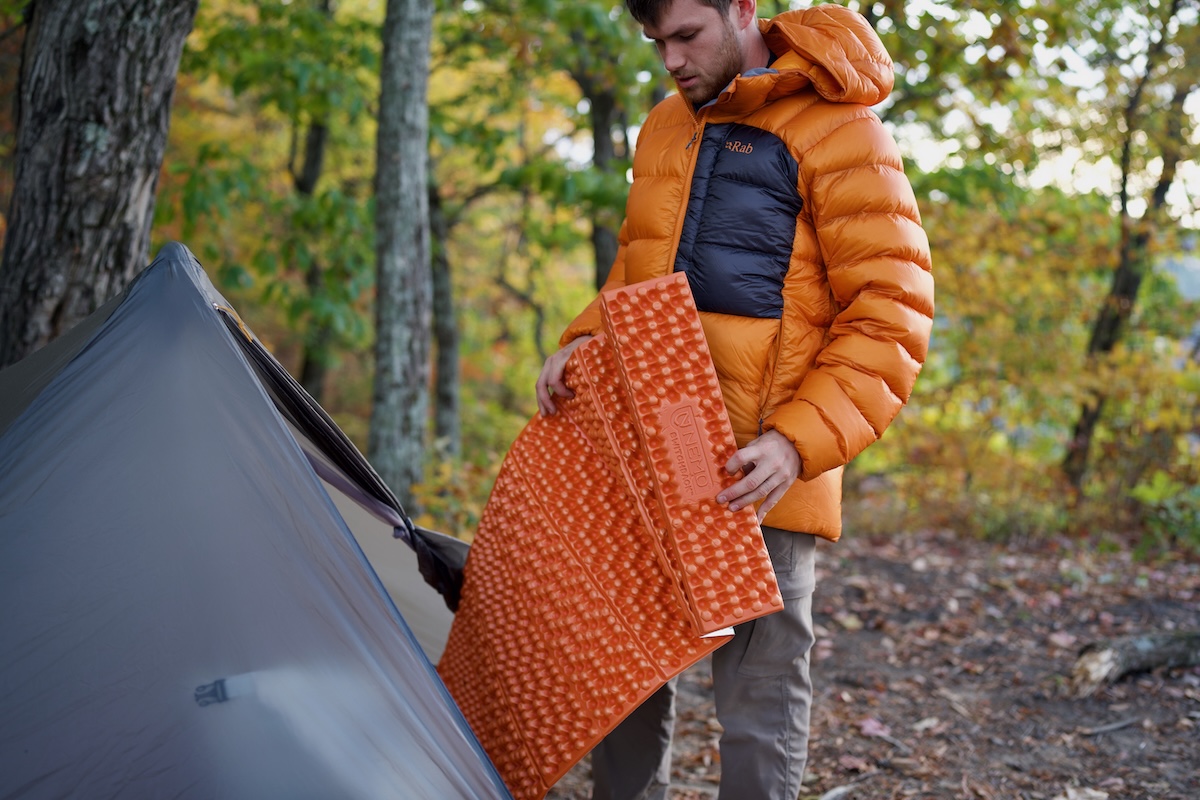
Recommended Sleeping Pad R-Values:
The ASTM Standard
All current sleeping pads are now rated based on a standardized ASTM International test. In this process, pads are sandwiched between a 35˚ Celsius hot plate on top, which mimics the body, and a 5˚ Celsius cold plate underneath, mimicking the ground. Over the course of four hours, testers measure how much energy the top plate uses in order to stay at a consistent 35 degrees Celsius (95˚F). The less energy it takes, the more insulative the pad. The more energy it takes, the less insulative the pad. The net result is more accurate and dependable ratings across the board, though brands are not required to prove the results, and models may still vary in warmth.
Packed size will be a direct reflection of the pad type, amount of insulation, and fabric thickness. Uninsulated or lightly insulated air pads are the most compact. Some even compress to the size of a can of soda, which is a far cry from the foam and self-inflating pads that dominated the market only a decade ago. A quick scan of our comparison table above shows that most air pads, even warm options like the Therm-a-Rest XTherm NXT, pack down small enough to easily fit inside a backpacking pack. Designs like the Nemo Tensor Elite pack down impressively small and can be gripped in one hand. If you are considering a closed-cell foam pad, packed size can present a problem, depending on your packing style. A foam option like Therm-a-Rest Z Lite is 20 inches long (most air pads are about 7 to 10 in. long), which means you’ll need to strap it to the outside of your pack—a common sight on long-distance trails.

Most sleeping pads are unisex and come in two or three sizes that allow you to choose based on your height and comfort preferences. A “regular” pad is generally around 72 inches long and 20 inches wide (at its widest point), and the “large” is often between 77 and 80 inches long and 25 inches wide. In terms of shape, they fall into two basic categories: Mummy pads, which taper towards the feet to cut weight, and rectangular pads that are more spacious and accommodating for comfort-minded or active sleepers. We've listed most specs for the mummy pad versions in our guide, as they are more popular with the ultralight crowd and save weight without too much sacrifice.
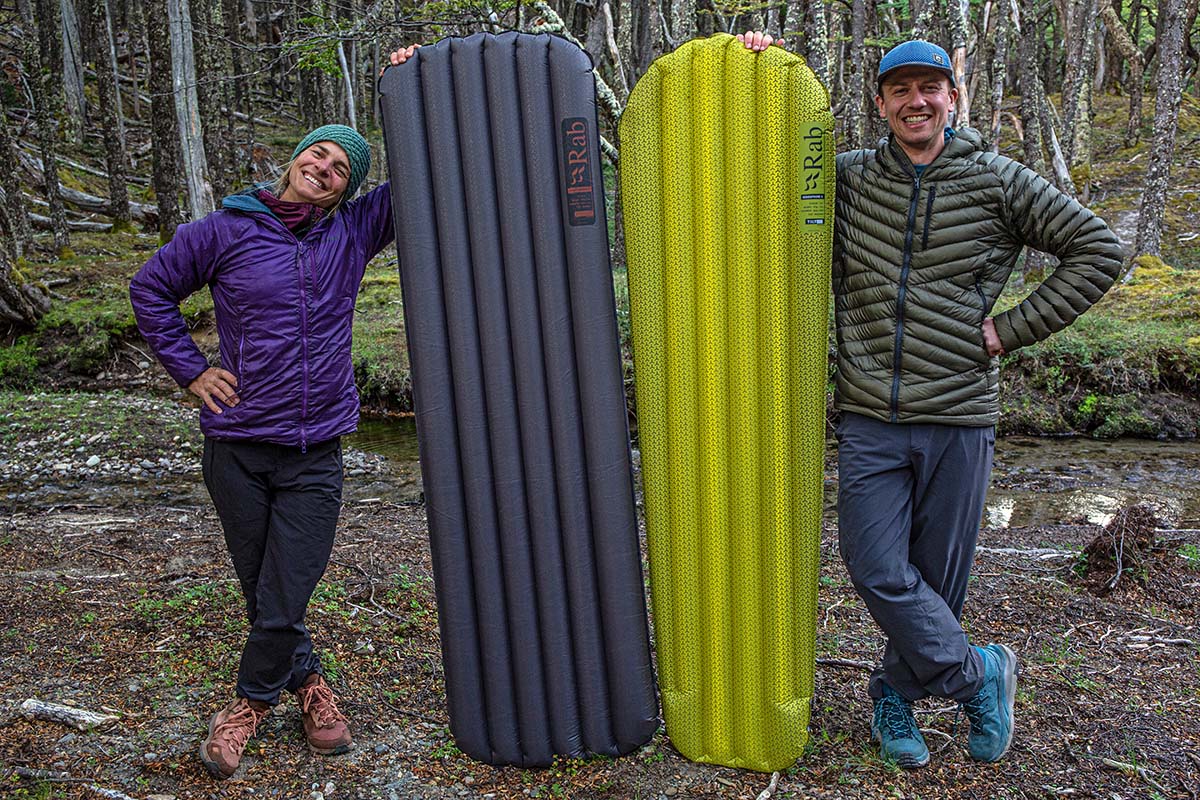
Some sleeping pads also come in a women’s-specific version that looks nearly identical to its unisex counterpart, albeit with slightly smaller dimensions. Women's-specific pads are usually shorter than the unisex pad—the Sea to Summit Women's Ultralight Insulated Air pad is 66 inches compared to 72 inches for the unisex version. They also may offer a little more insulation, making them a great choice for shorter adults who sleep cold. And finally, some models tweak the dimensions and concentration of foam around the hips for greater comfort and a bit more room for hips.
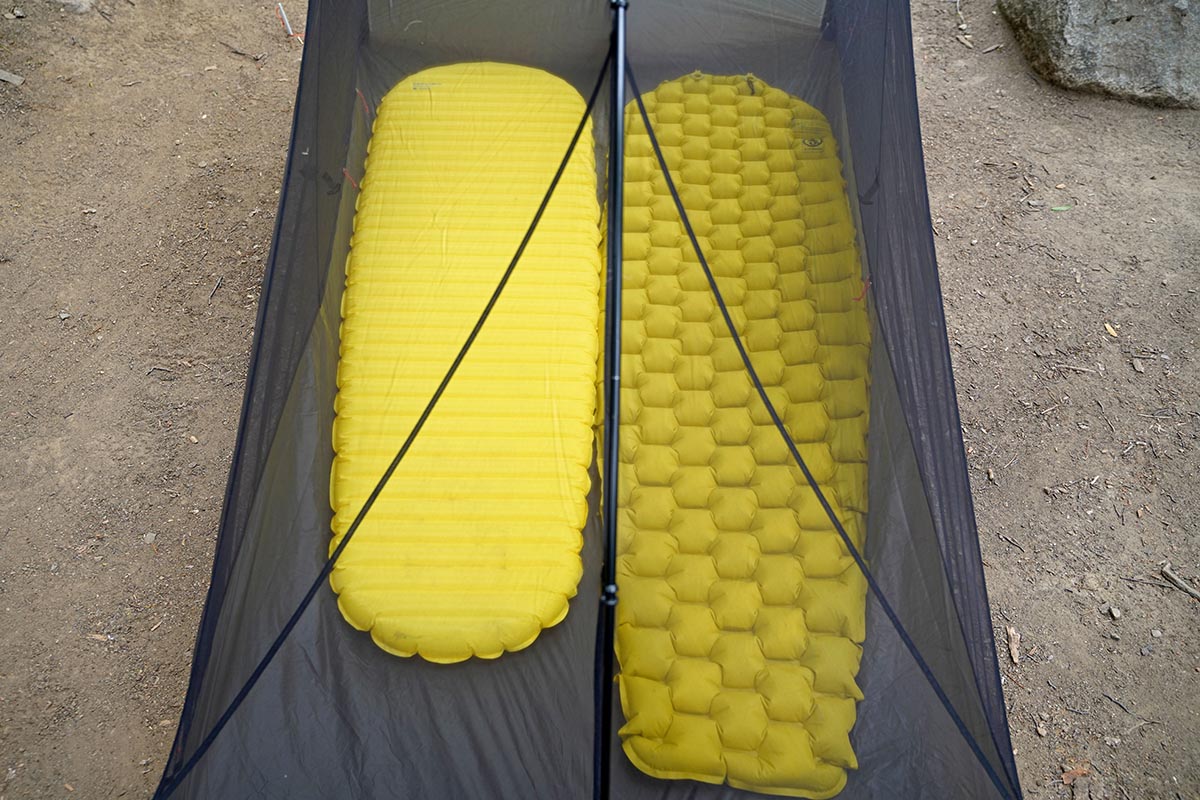
Air pads utilize a valve to inflate/deflate, and there have been a fair number of changes in the designs over the past few years. Traditional sleeping pads open and close by twisting and pushing or pulling a round plastic valve connected to the side of the mat. These work pretty well in general, and they’re still used on some old and budget-oriented designs, but there are downsides. For one, the valve works inefficiently because it’s completely open while inflating, which allows some air to escape in between breaths. Further, their upright profile takes up space when rolled up, and they are slow to deflate.

To address these issues, a number of manufacturers, including Sea to Summit, Nemo, and Big Agnes, have turned to flat valves. Beyond the slim profile, they often have dedicated openings for inflating and deflating, and importantly, a flap that keeps air from escaping while blowing into the opening. We've found these pads with two separate valves for inflating and deflating to be reliable, efficient (it takes about 10 breaths total to inflate and deflation is almost instantaneous), and add essentially no weight—all excellent characteristics. The one Exped pad on our list has two valves: one to deflate and one to inflate. This strikes us as somewhat unnecessary, but it gets the job done.
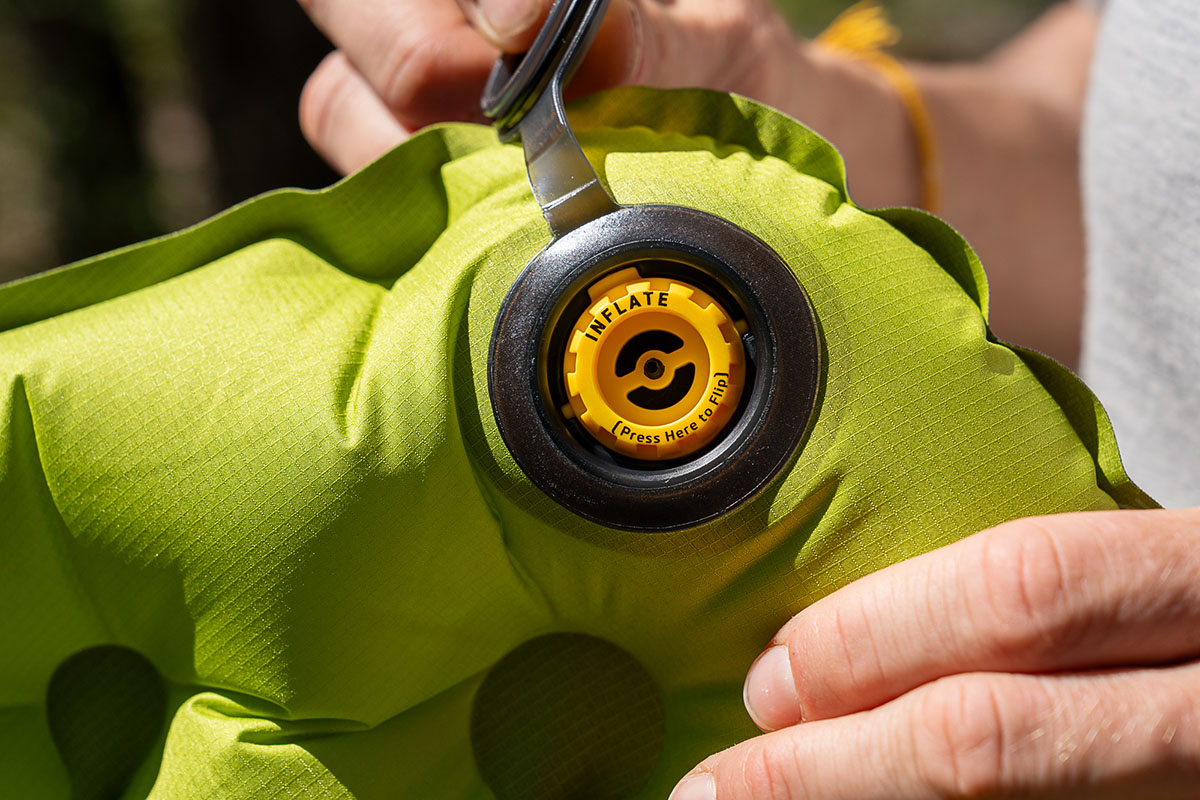
A blessed update in the past few years has been Therm-a-Rest's new WingLock valve, which is a twist on a more traditional design. Their new build allows for one-way inflation—with no air loss between breaths—and twisting the side “wings” quickly releases air. In use, we’ve found it’s not as fast as the flat valves on other pads, but its sturdy build and replaceability (something that’s not typically possible with a flat valve) make it worth the trade-off in efficiency for high-volume users like thru-hikers. It also offers much faster deflation than their previous valves.
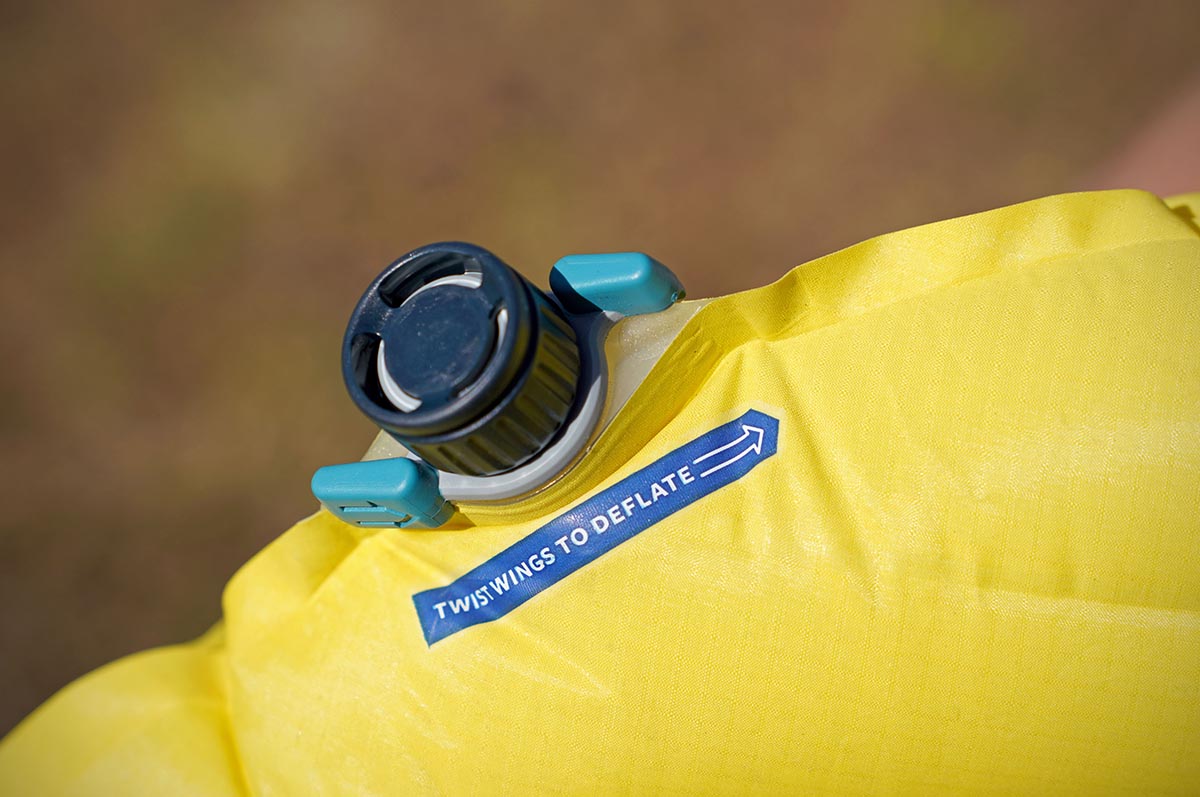
For the lightest of ultralighters, there are options beyond even our lightest-weight air pads. Some backpacks like the Gossamer Gear Mariposa have a removable foam back panel that super weight-conscious folks use as a sleeping pad, albeit one that's just an inch thick and less than two feet long. This is pretty extreme, though, and unless you're going for a speed record, this likely isn't a preferred choice. Some ultralighters also cut their closed-cell foam pads in half, using just half the pad under their torso and elevating their legs on their empty pack. This saves around 7 ounces, but again... we're not sure it's worth it. Some models offer "short" options as well, like the Therm-a-Rest NeoAir XLite (66 in.,11.5 oz.) and the Nemo Switchback (51 in., 10.5 oz.). Going with a short pad will provide insulation for your torso (technically more critical than insulating your legs), but having your legs drop off the end of the pad isn't worth the several ounces of weight savings if it compromises a good night's sleep.
As is often the case, the lighter the gear, the more fragile it will be. Sleeping pads are no different and are actually more prone to this reduced durability, thanks to lower-denier face fabrics, which save weight but make them more likely to end up with seam failures and punctures. This was never more apparent than in the short-lived Therm-a-Rest NeoAir Uberlite from a few years back. If you're heading into the desert with an ultralight gear system, we recommend using a footprint under your tent to add an extra layer of protection against cactus spines and sharp rocks, and many thru-hikers prefer the near indestructibility of closed-cell foam pads like the Nemo Switchback or Therm-a-Rest ZLite Sol. Otherwise, choose your pad carefully, and it's worth opting for a model with a higher denier on the bottom, like Sea to Summit's Ultralight Insulated Air (40D on the bottom, 30D on the top), and carrying a bit more weight. Saving two ounces won't matter if you pop your sleeping pad on the first night of a 200-mile trail. Don't ask us how we know.
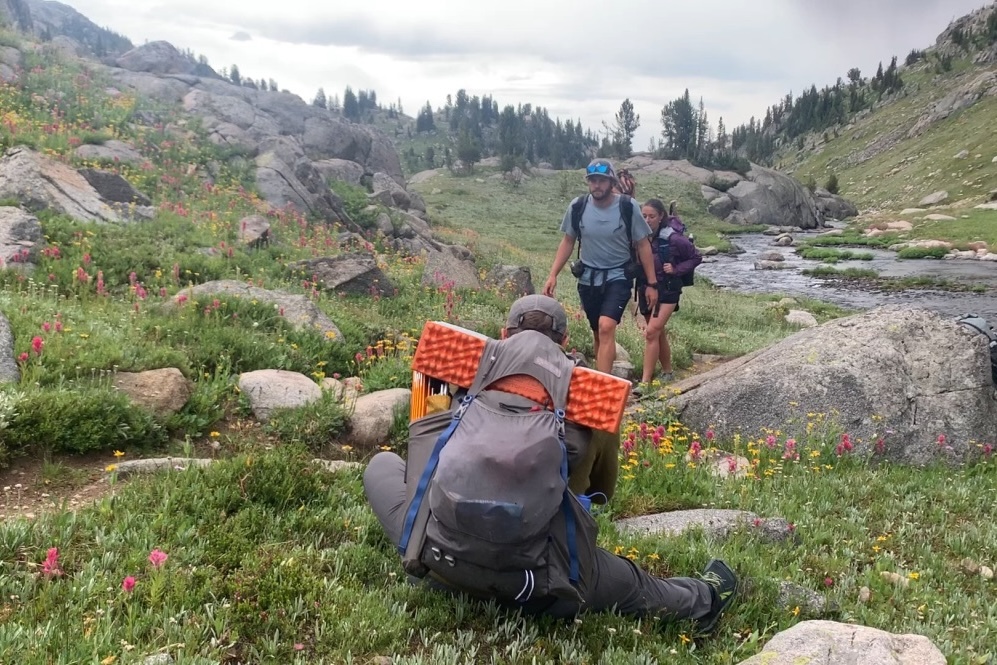
If you are like most backpackers, you don’t head out year-round. If you have a self-inflating pad (not featured in this lineup because they are generally too heavy), make sure to leave it unrolled with the valve(s) open during the off-season—this will keep the foam in good shape. If it's stored compressed, the pad will lose its self-inflating nature because the foam will become overly compacted. Having a hard time finding a spot to store the pad? Under a bed or behind a couch are popular options.
Air pad storage and care are a little simpler. Remove all the air from the pad and keep it rolled up in its storage bag to protect it from punctures. As for caring for a closed-cell foam pad—try not to let your dog eat it, how about that? But seriously, it's not much harder than that. Don’t leave heavy objects on top of it to avoid undue compression of the foam, and (if it’s a rollable type) store it unrolled so it doesn’t lose its shape.

The outdoor industry as a whole has seen a sizable uptick in the use of sustainable practices in recent years, and the sleeping pad space is no exception. Two of the most common measures are recycled fabrics and Bluesign-approved materials that have met strict safety and environmental requirements to be deemed safe for workers, consumers, and the environment. Nemo is one brand at the forefront of the sustainability push, and their Tensor line uses Bluesign-certified fabrics. Big Agnes also employs recycled nylon for their Zoom UL pad, while Exped’s Ultra 3R uses recycled polyester. A final way to shop sustainably is to purchase from a Climate Neutral Certified brand like REI Co-op that works to offset their carbon emissions.
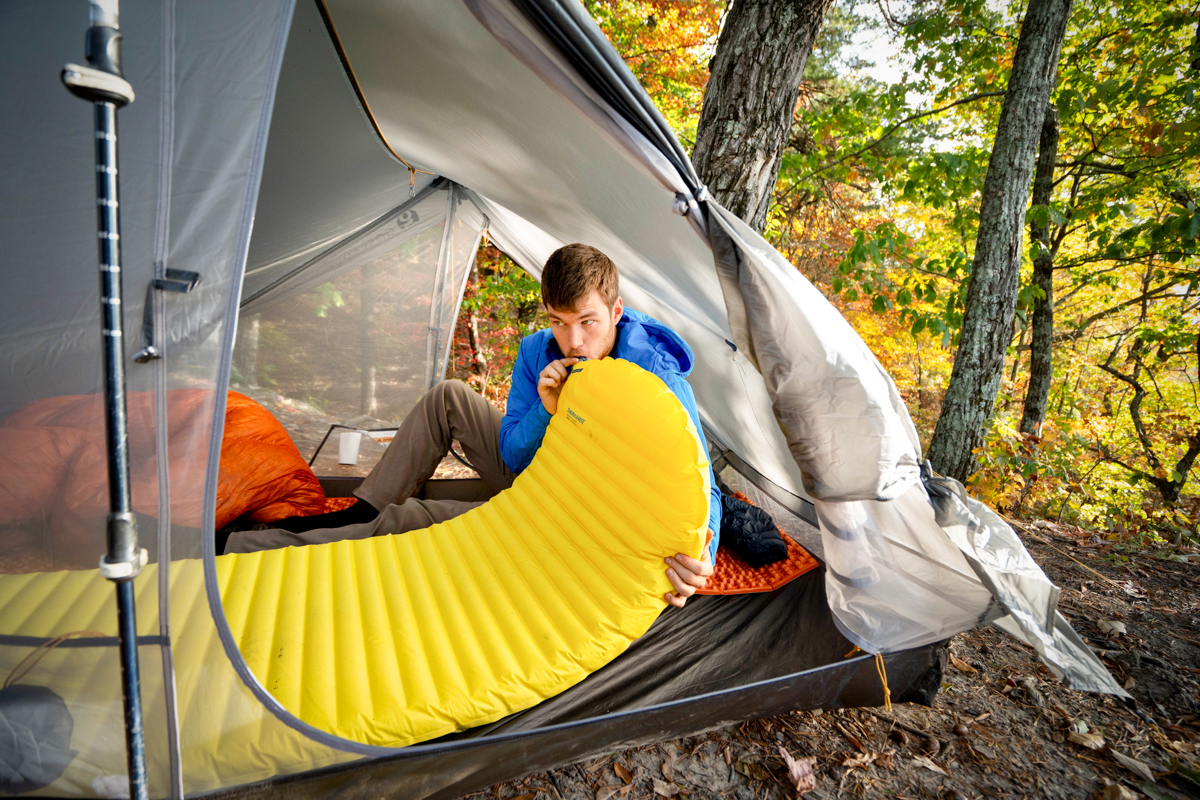
The pads on this list are all in the ultralight category, but standard backpacking pads and camping mattresses present another option for people heading into the front-country or who don't care too much about weight. These other models are often thicker and more luxurious and can be made with heavier face fabrics for more durability. You'll also find plenty of self-inflating models, which ease some of the burden and light-headedness of inflating with your own tired breath. Front-country mats are also often layered with extra foam padding, and these are even more durable because the manufacturers aren't concerned with keeping weight down. To see our full list of favorites and a breakdown of important features, check out our article on the best camping mattresses and pads and our standard best backpacking sleeping pads review.
Back to Our Top Sleeping Pad Picks Back to Our Sleeping Pad Comparison Table